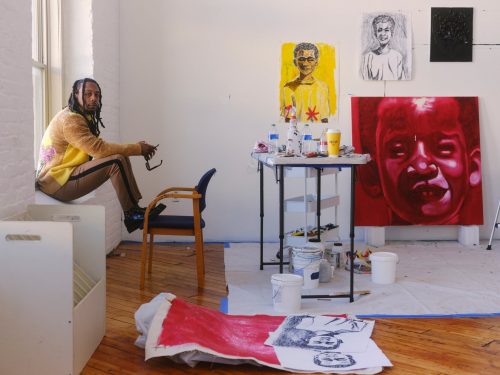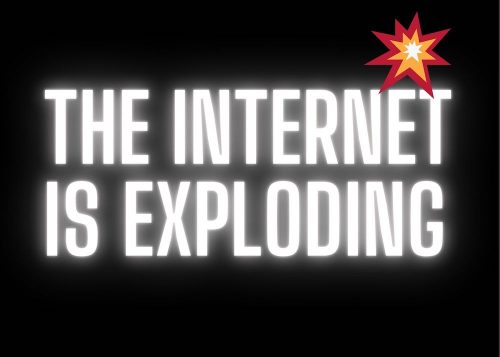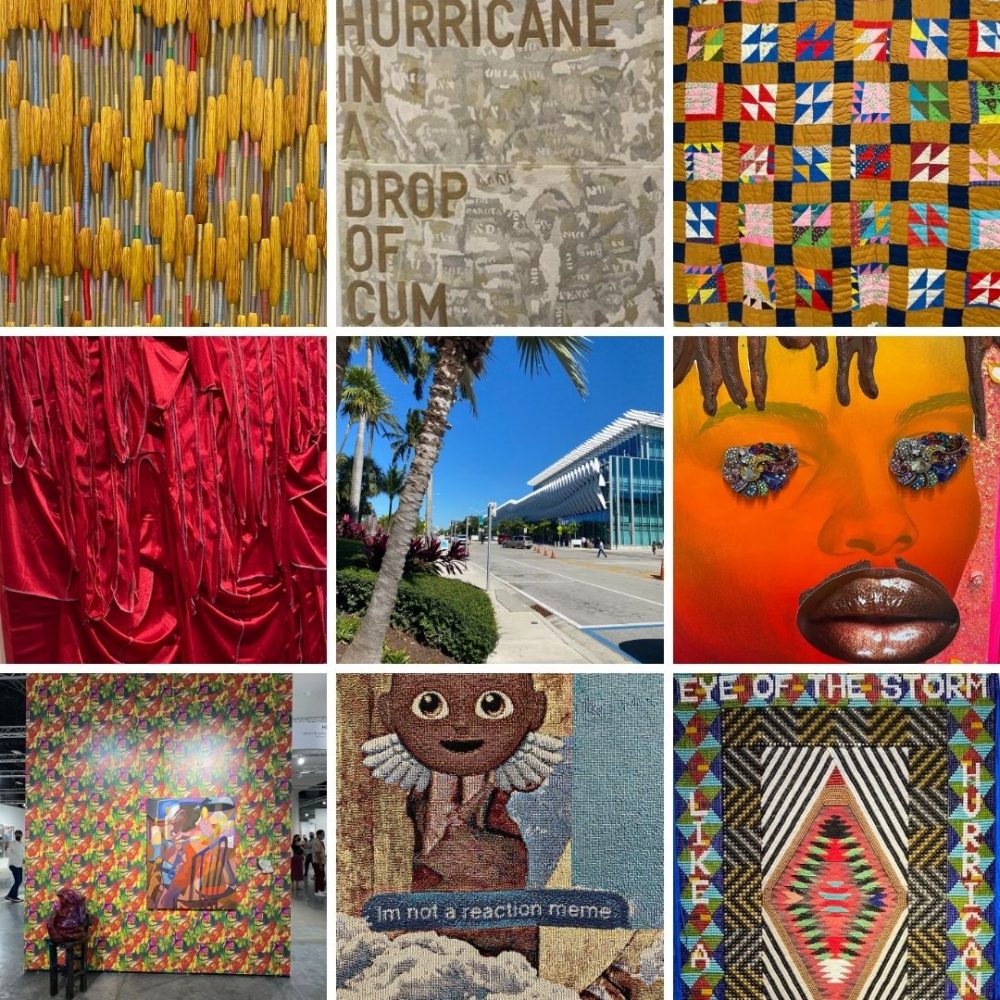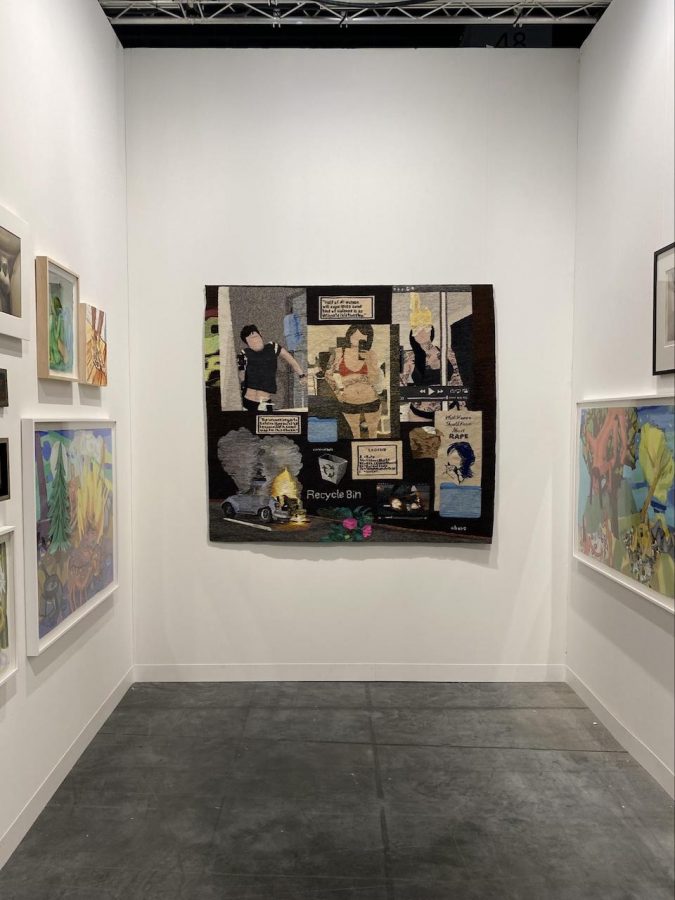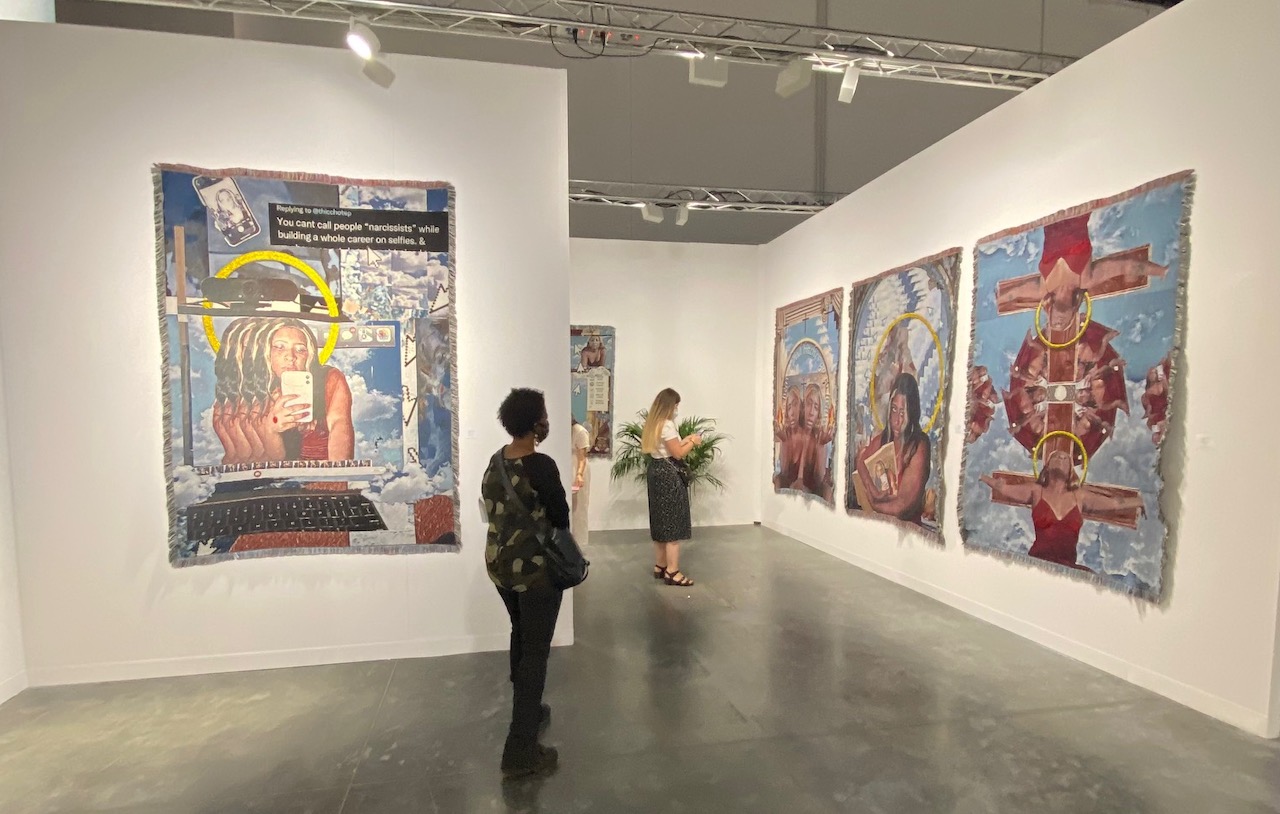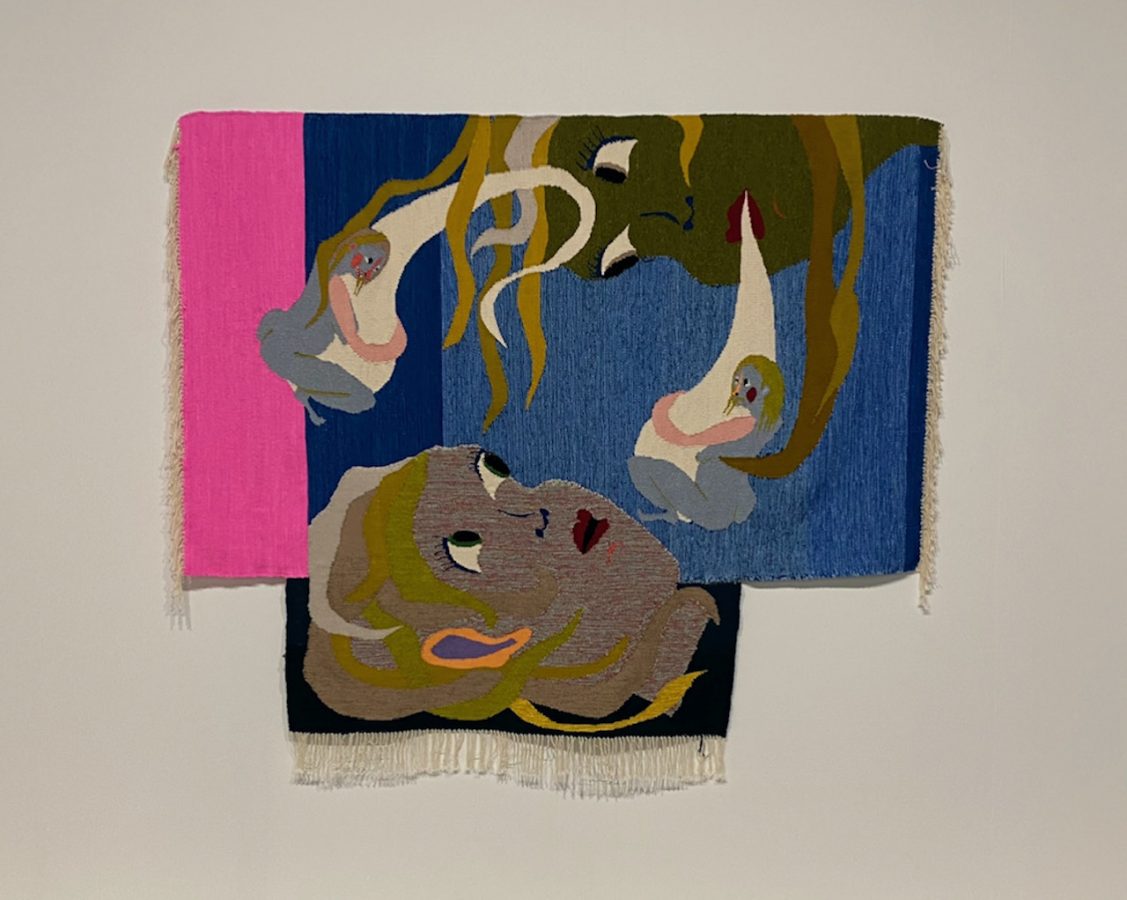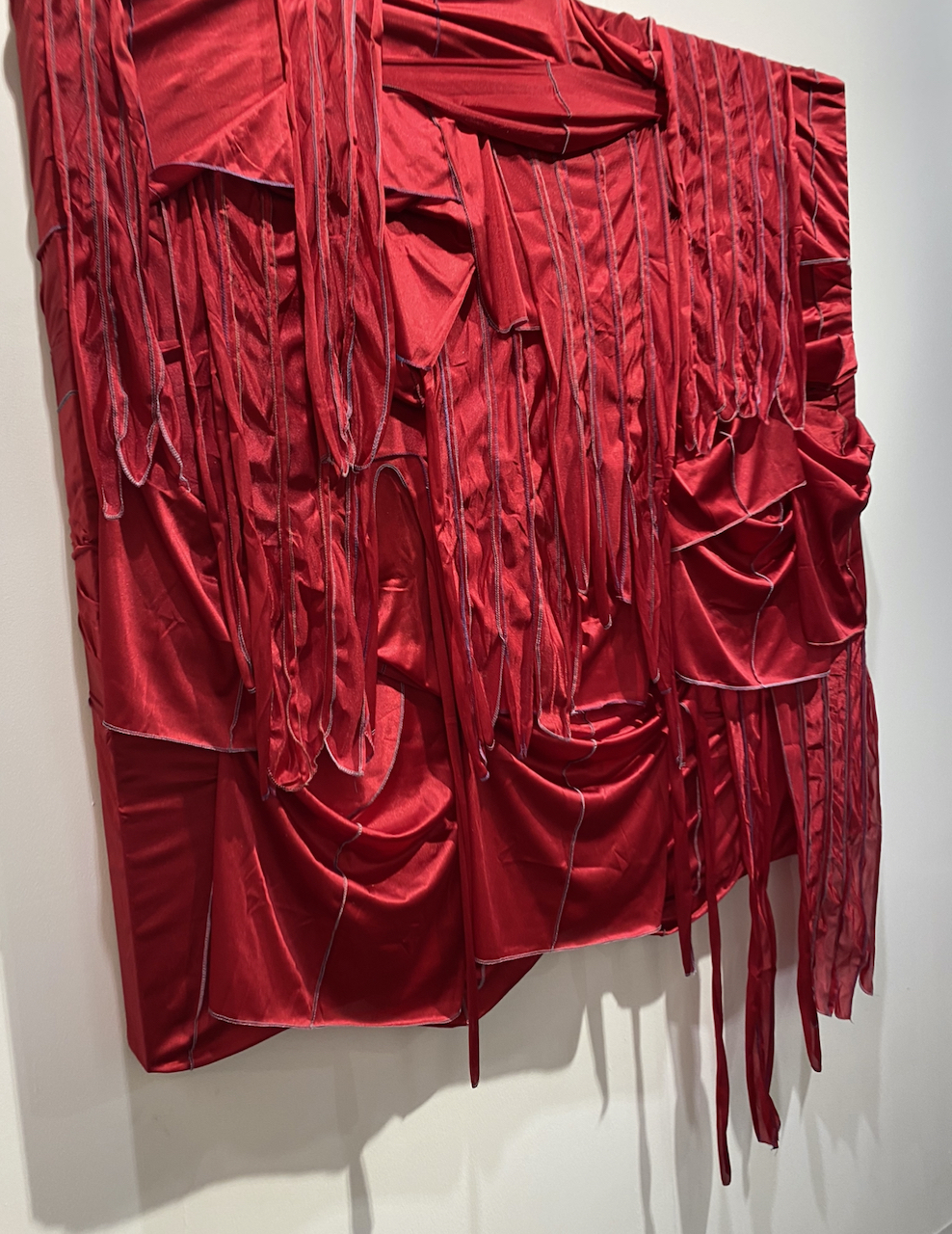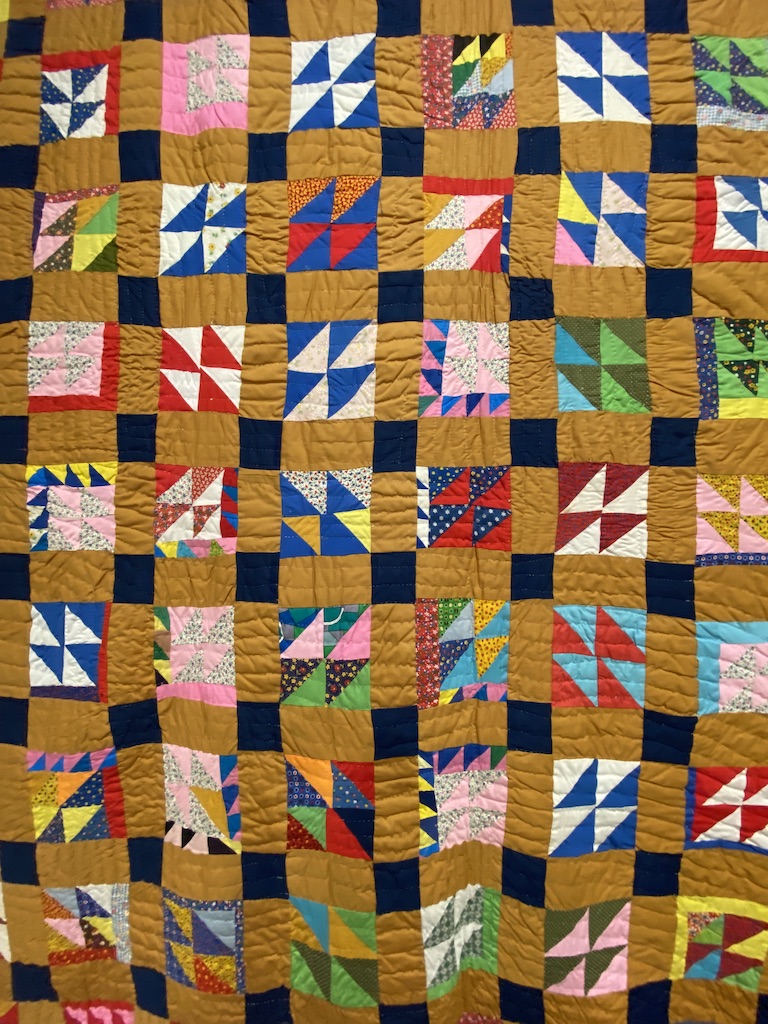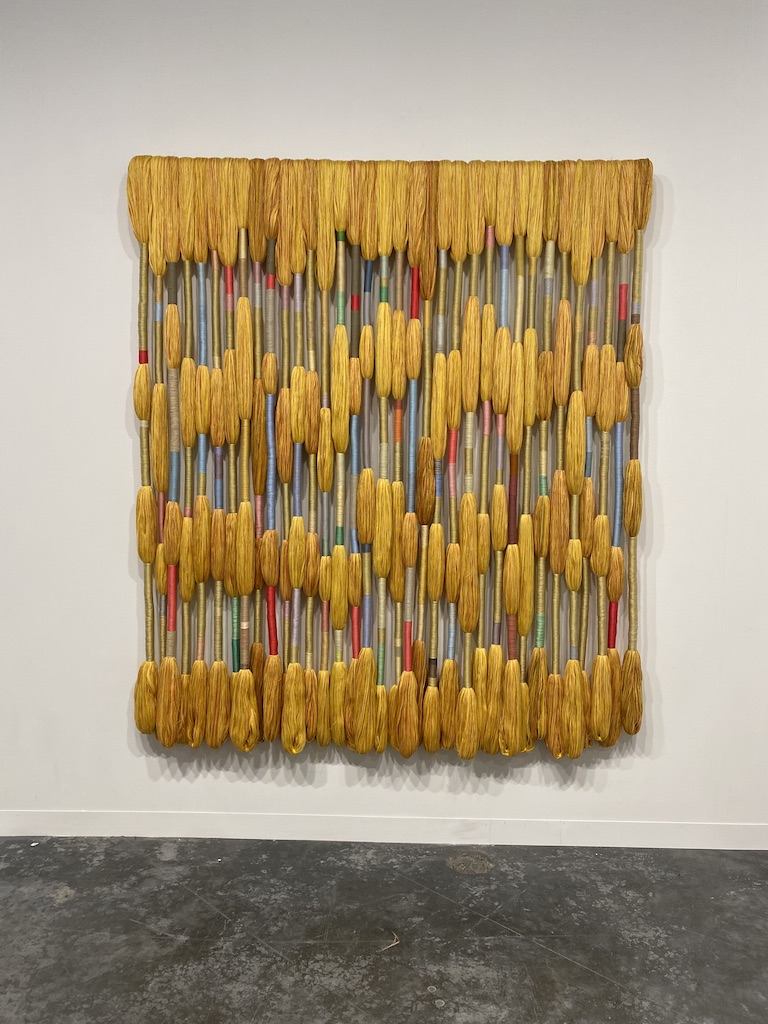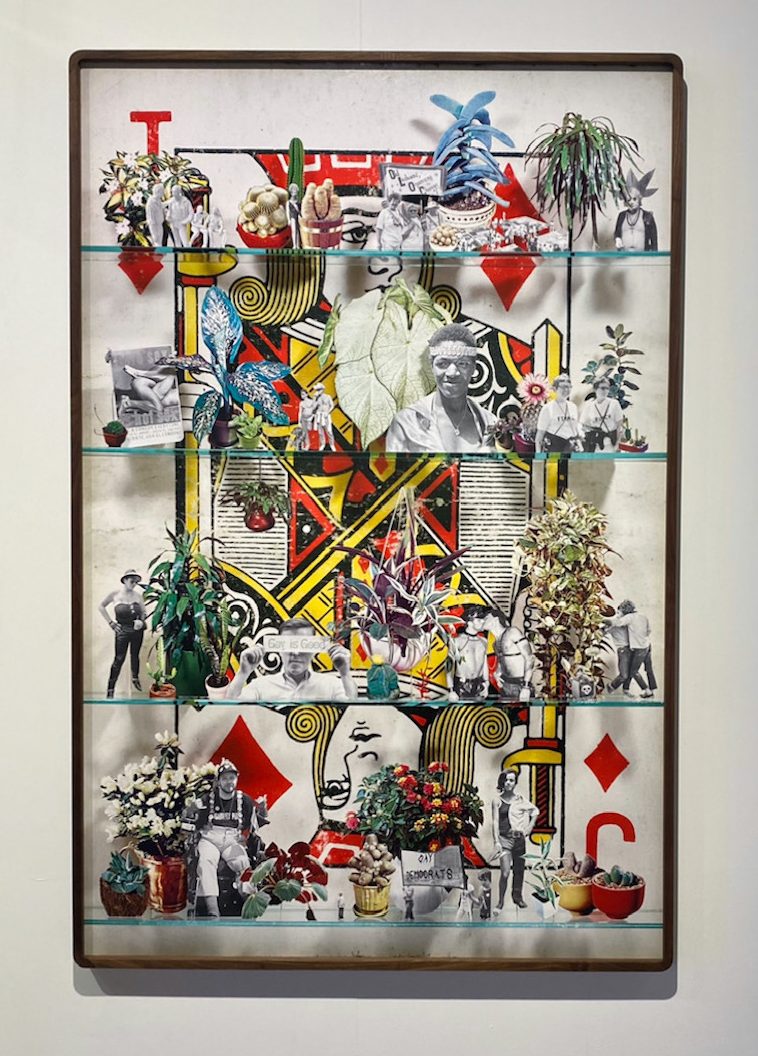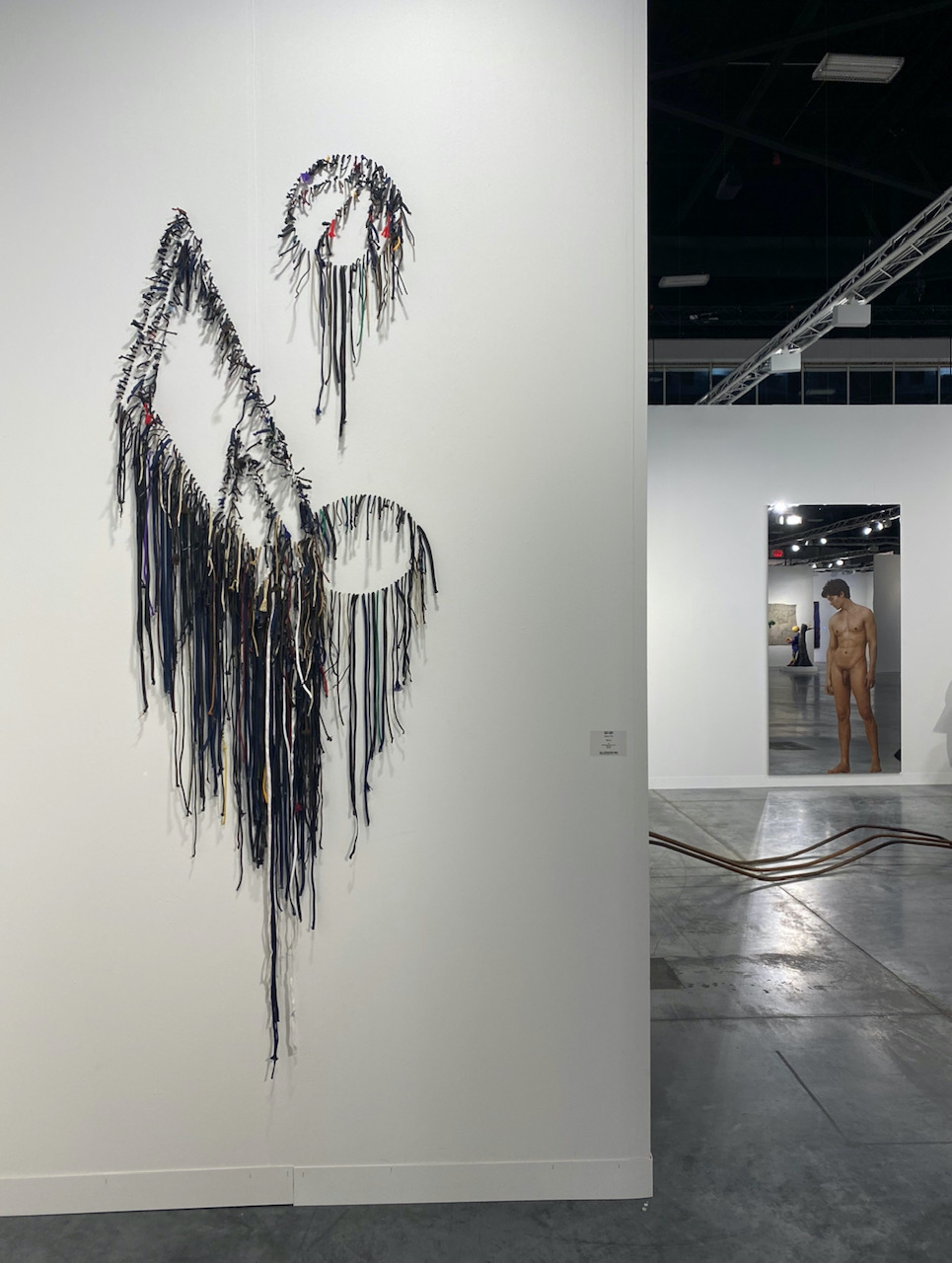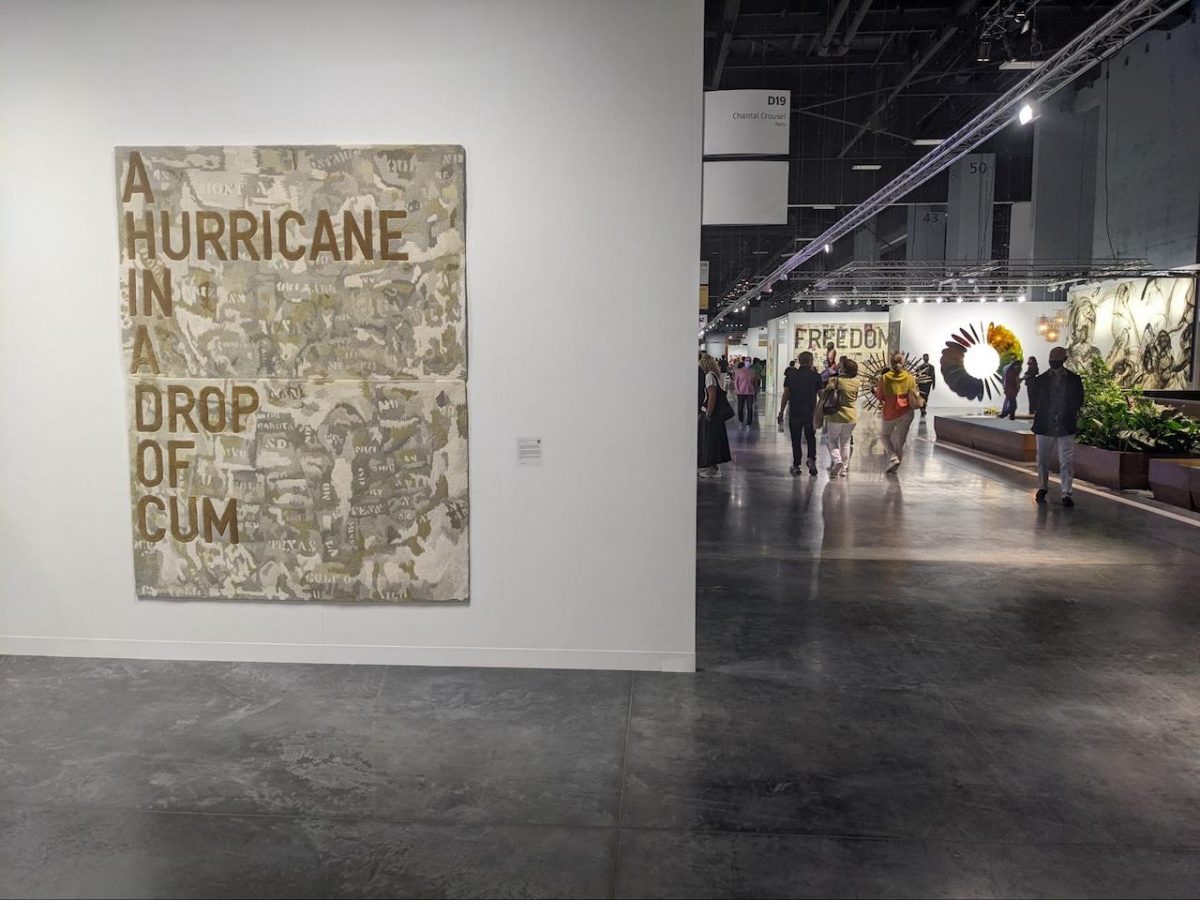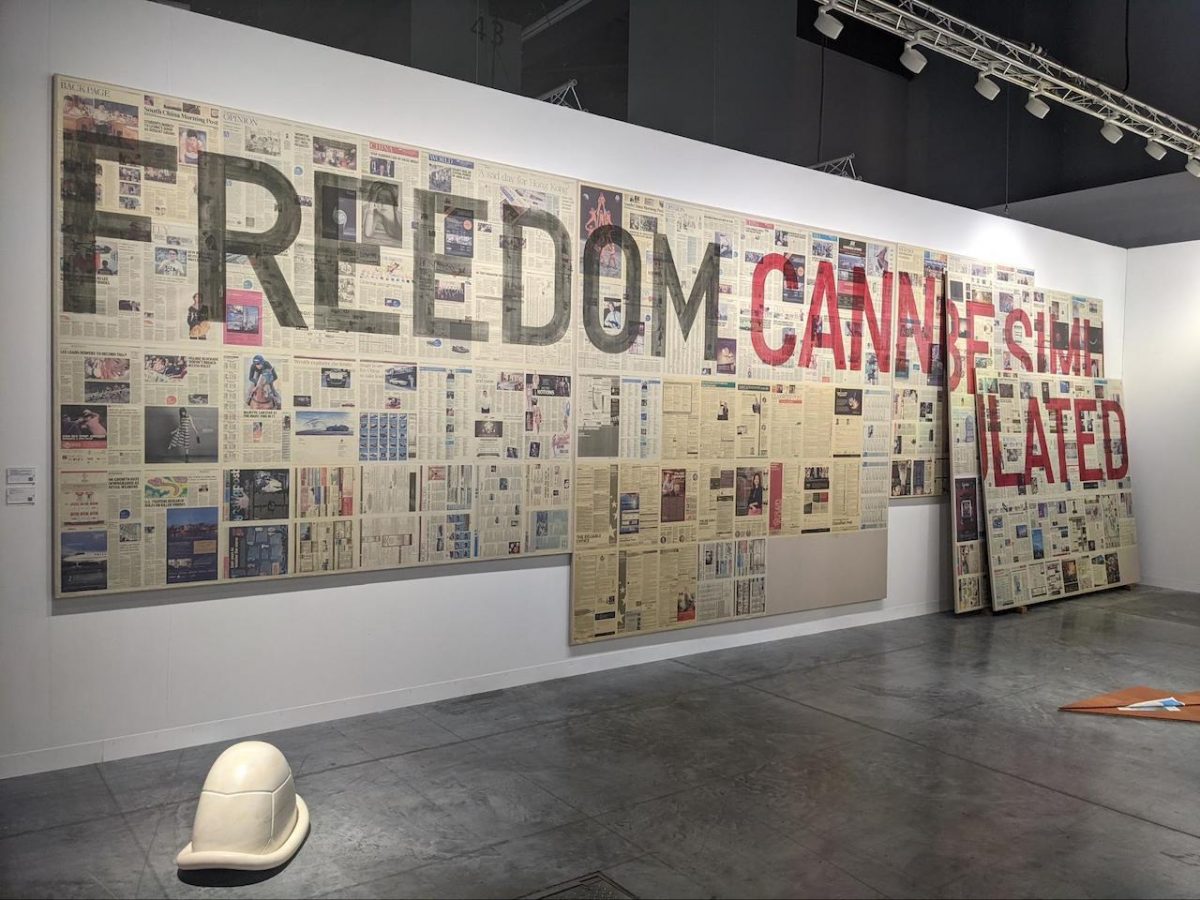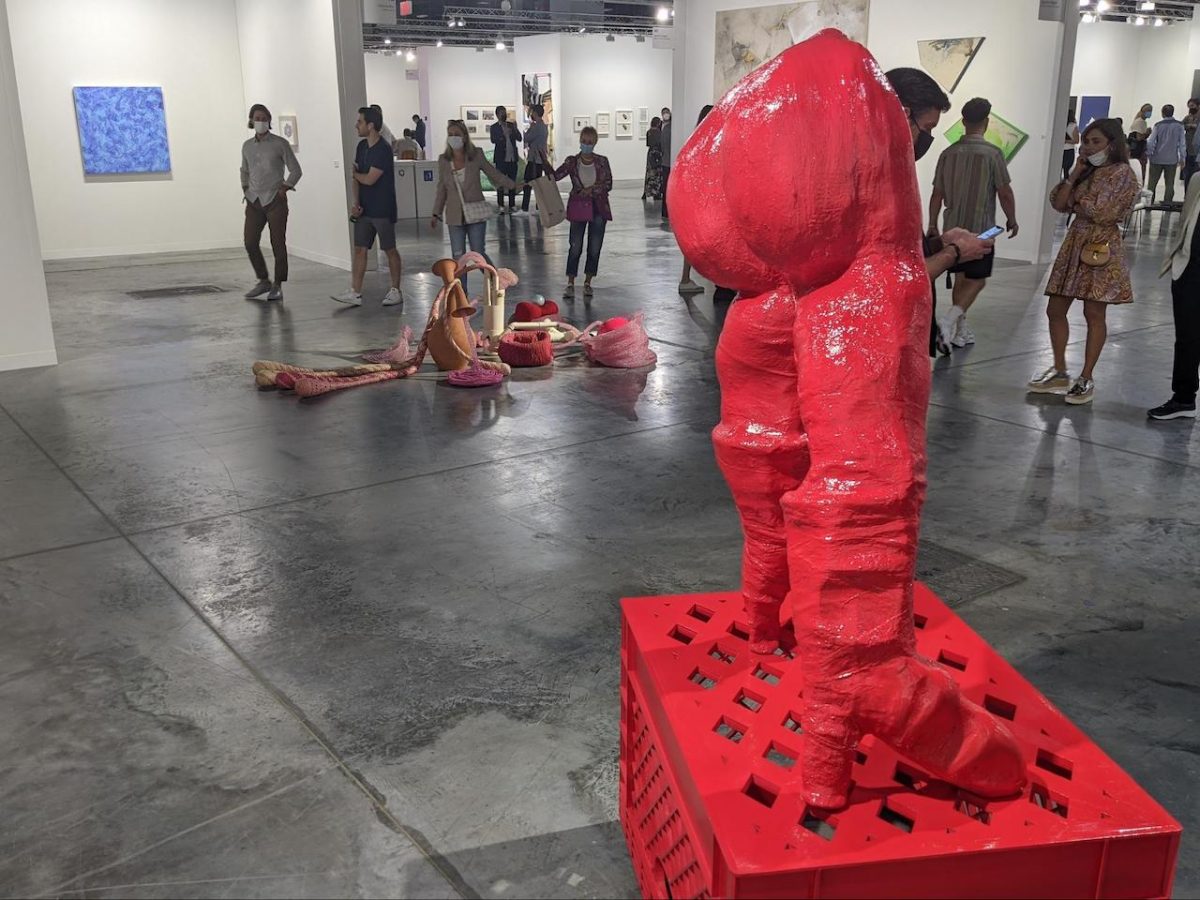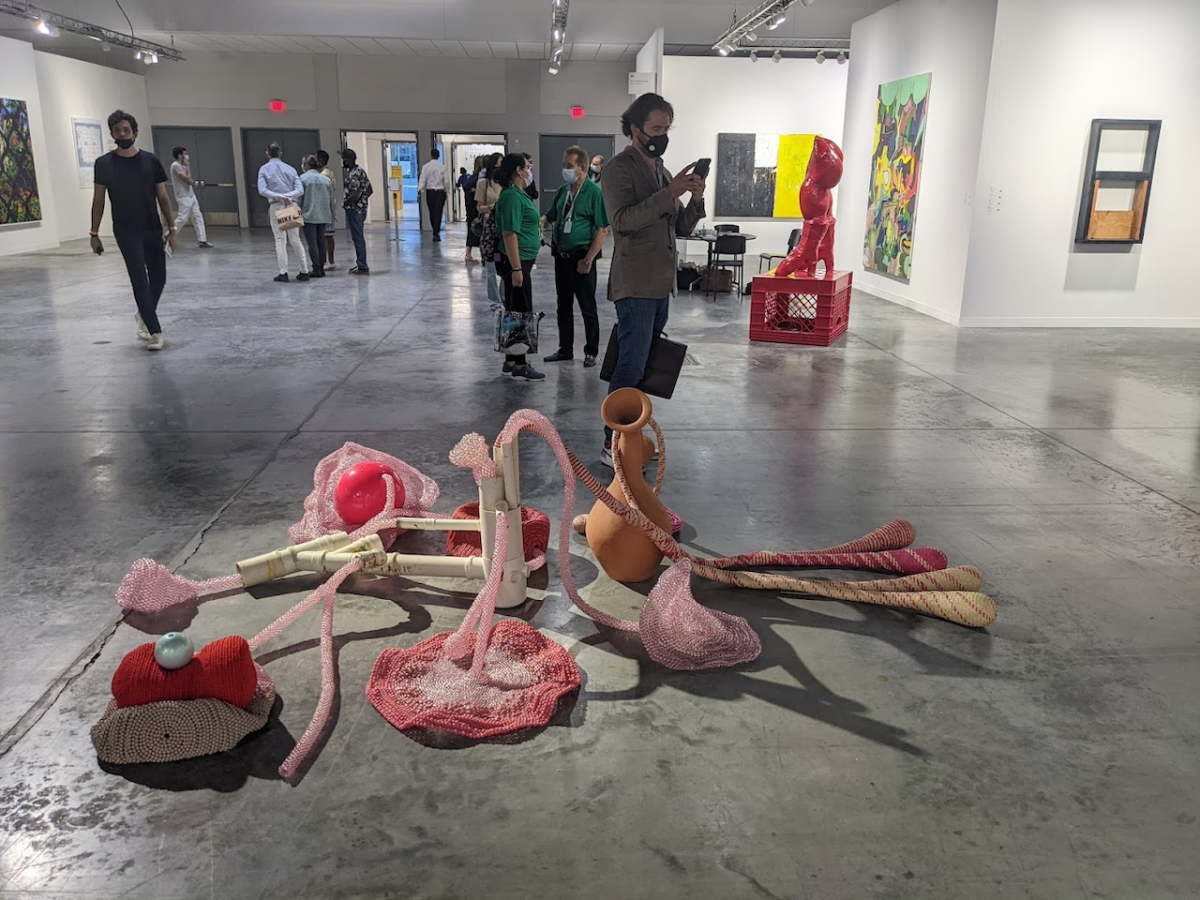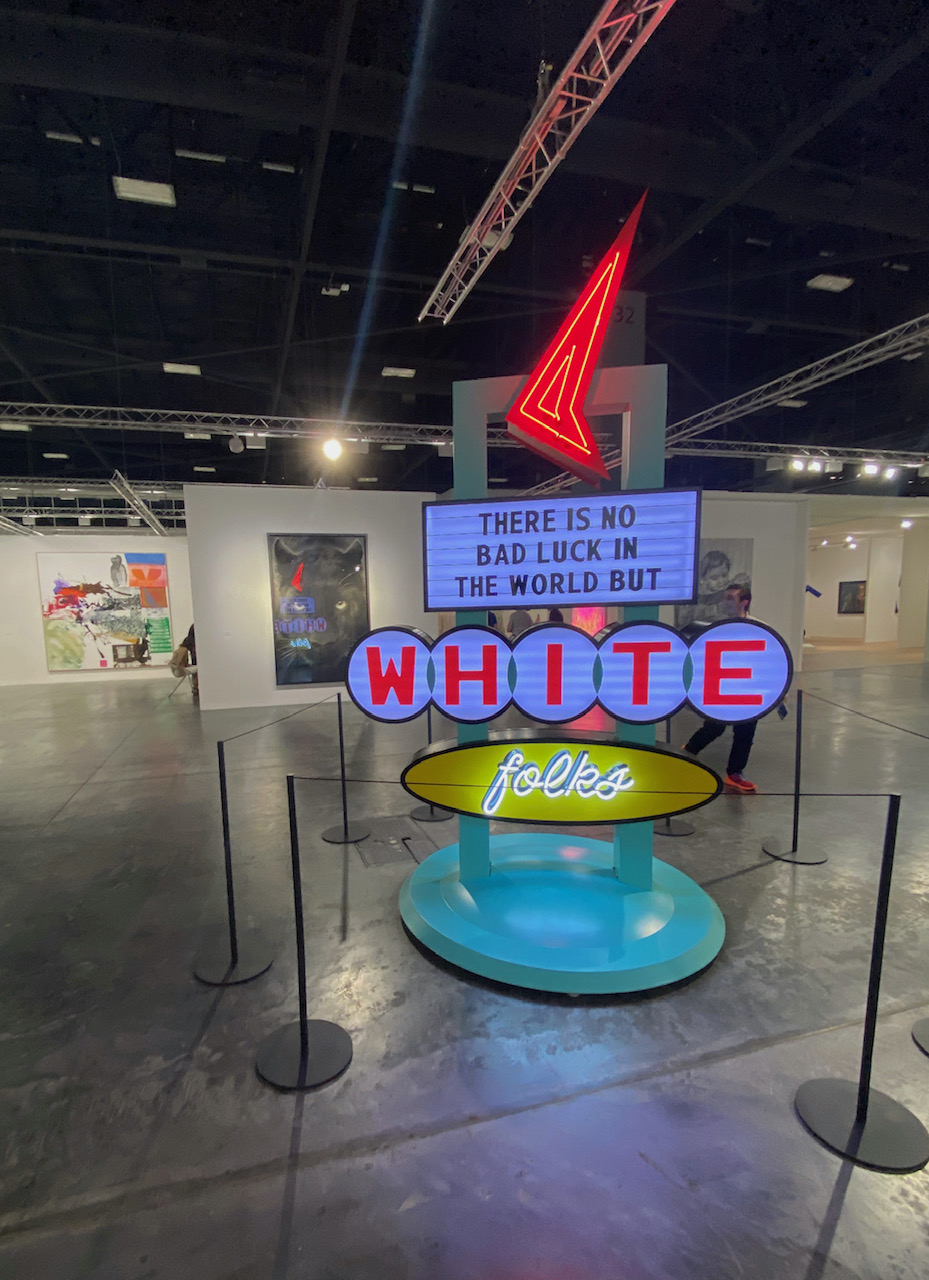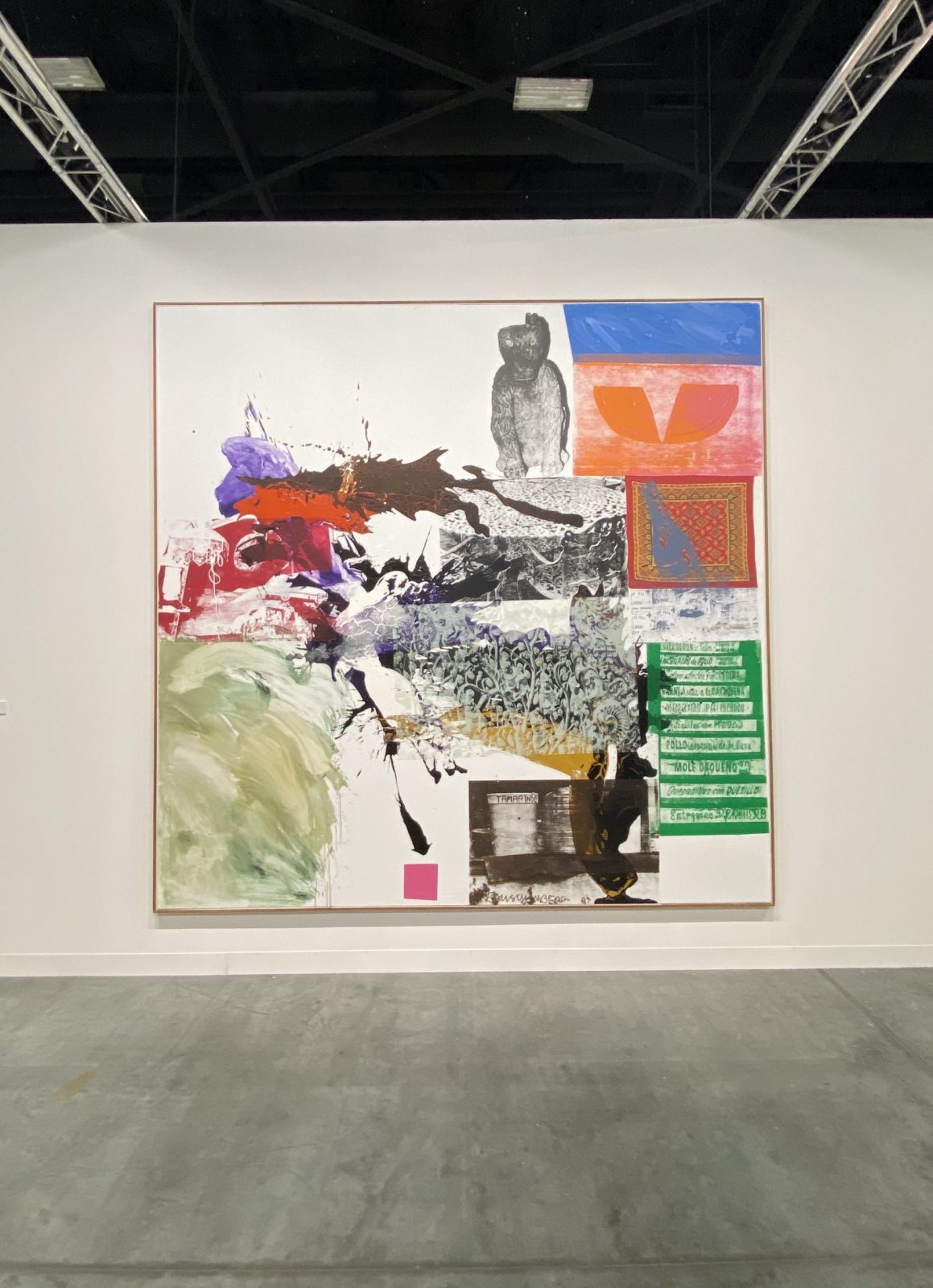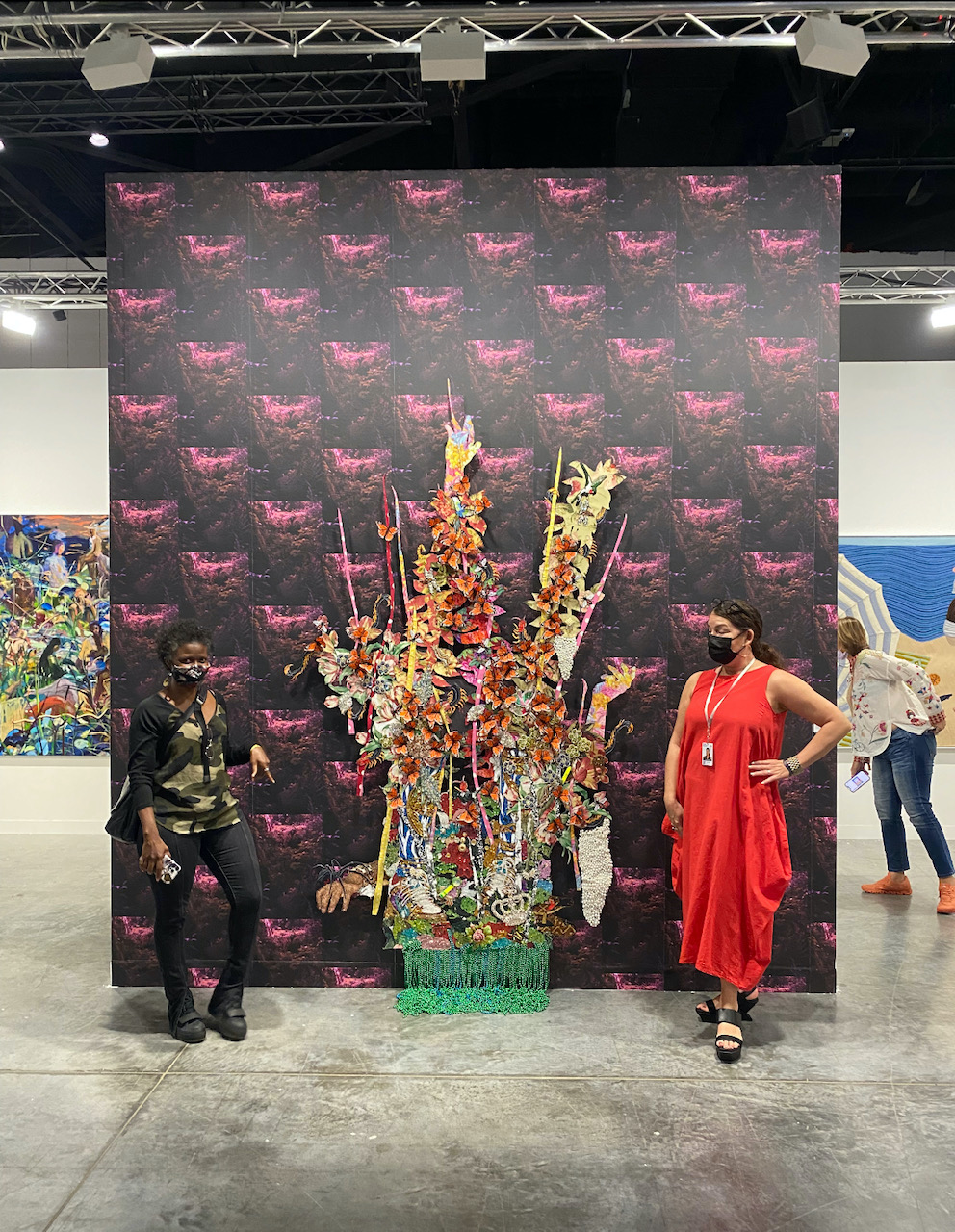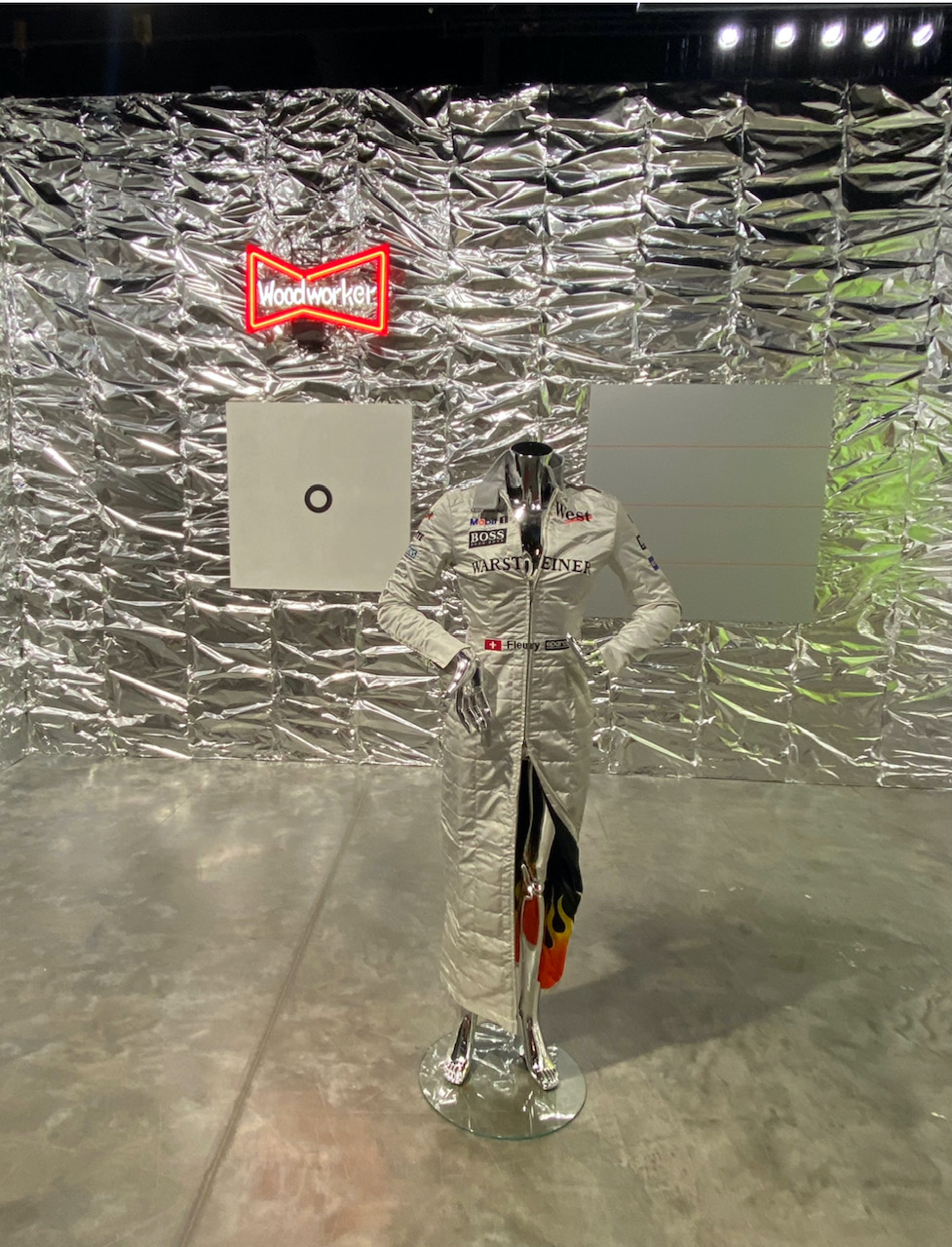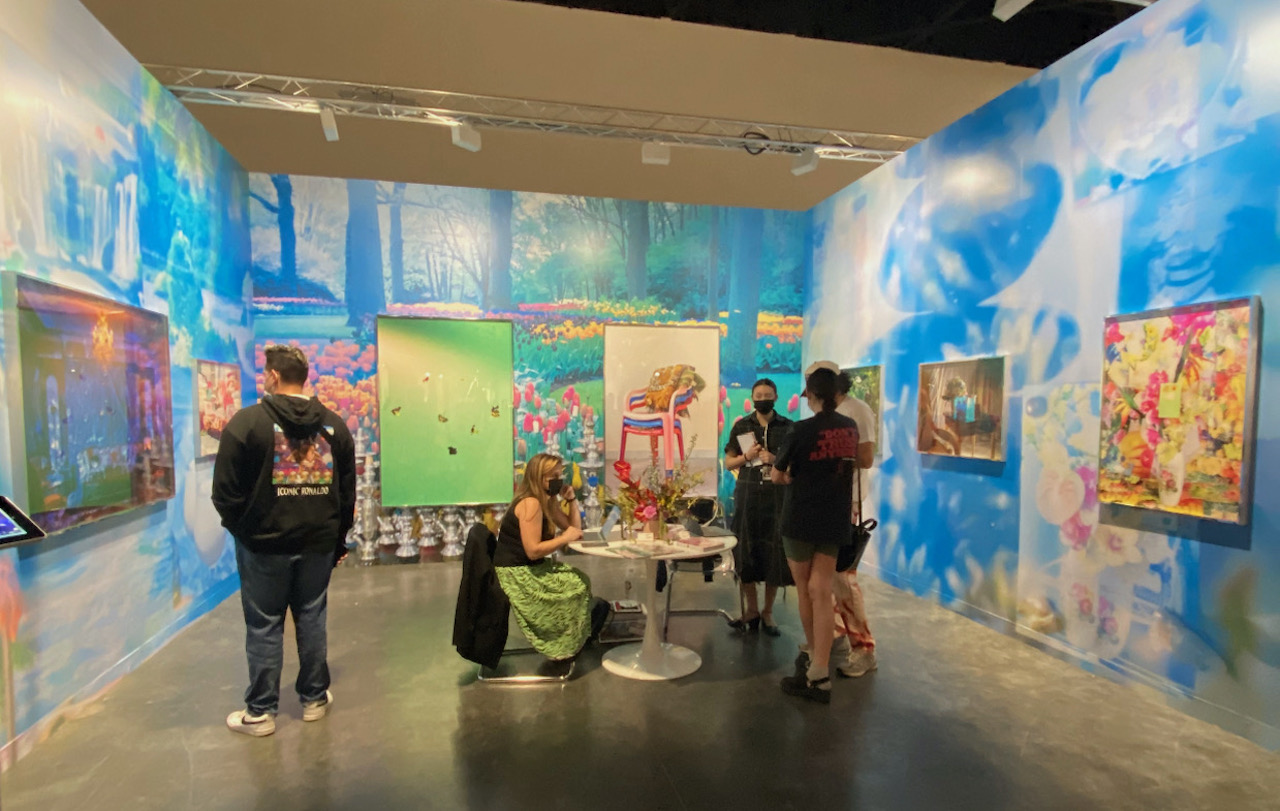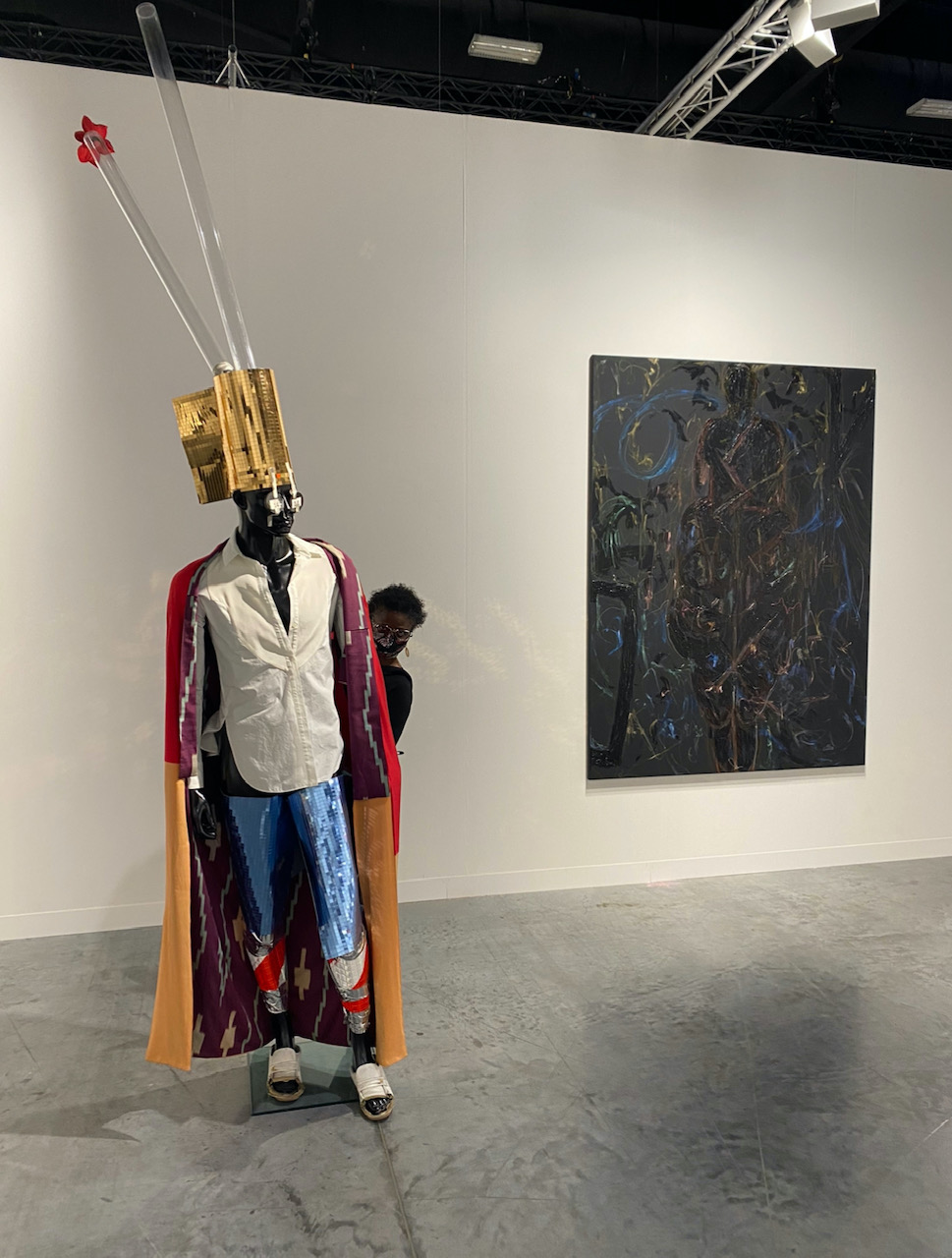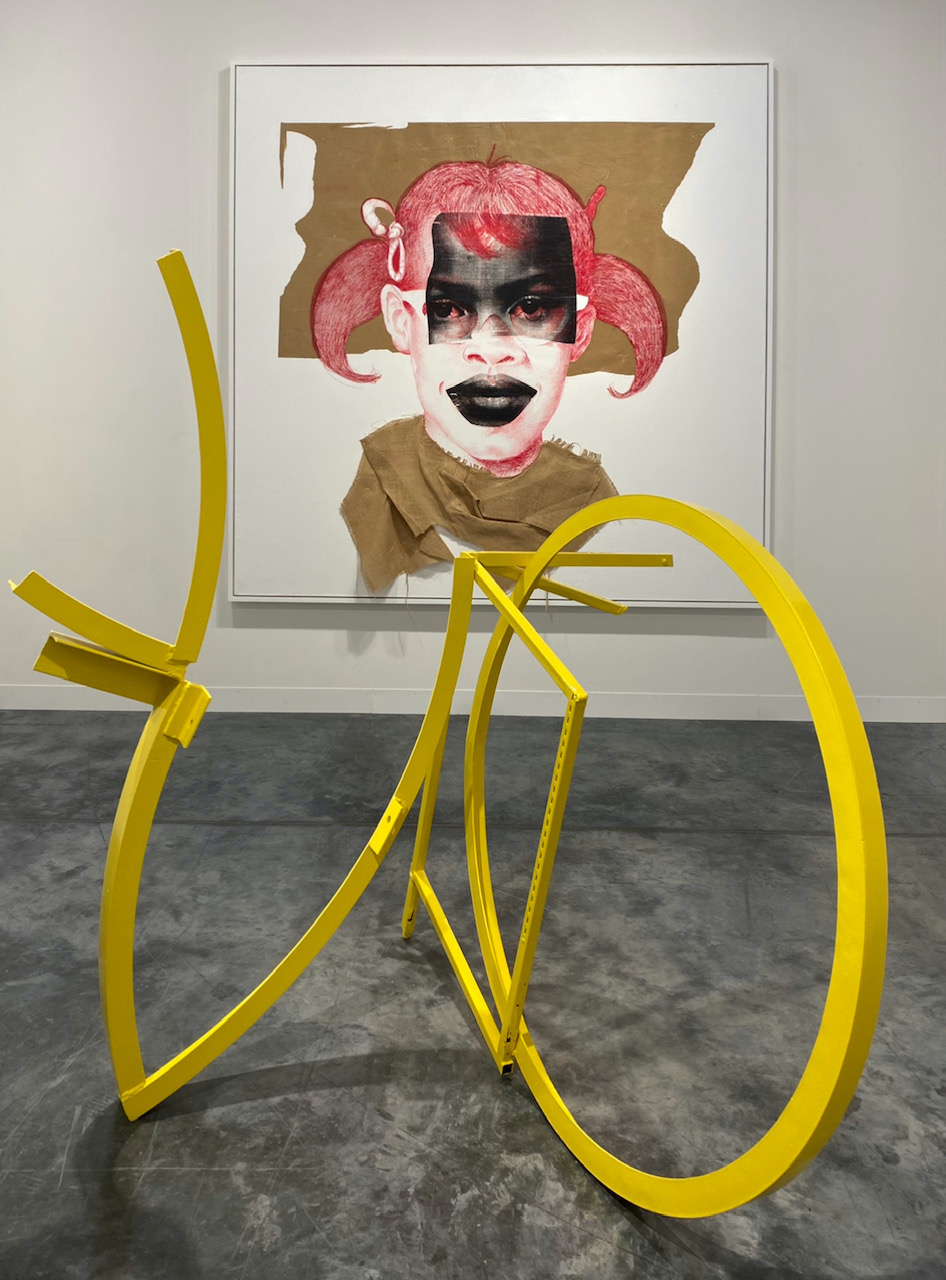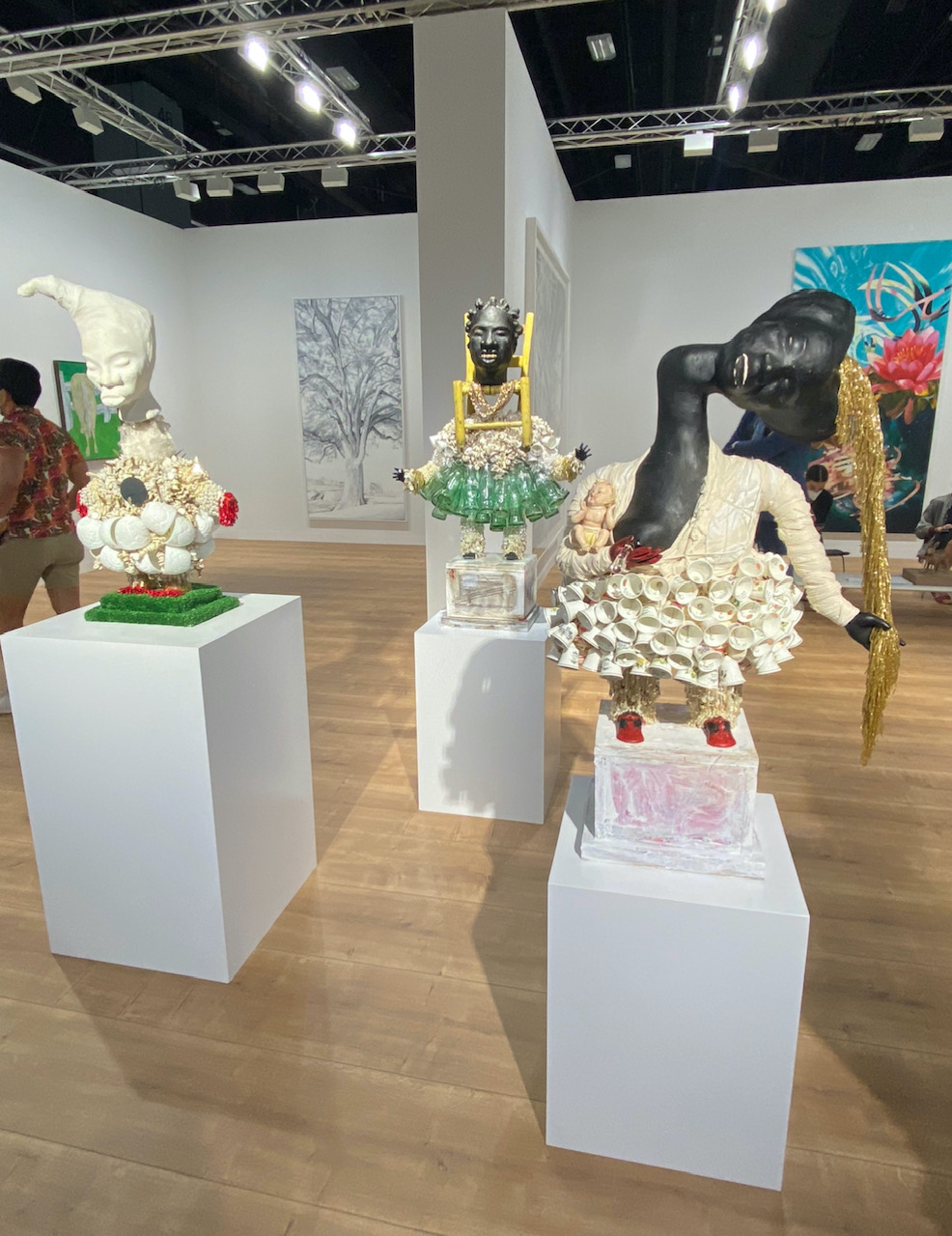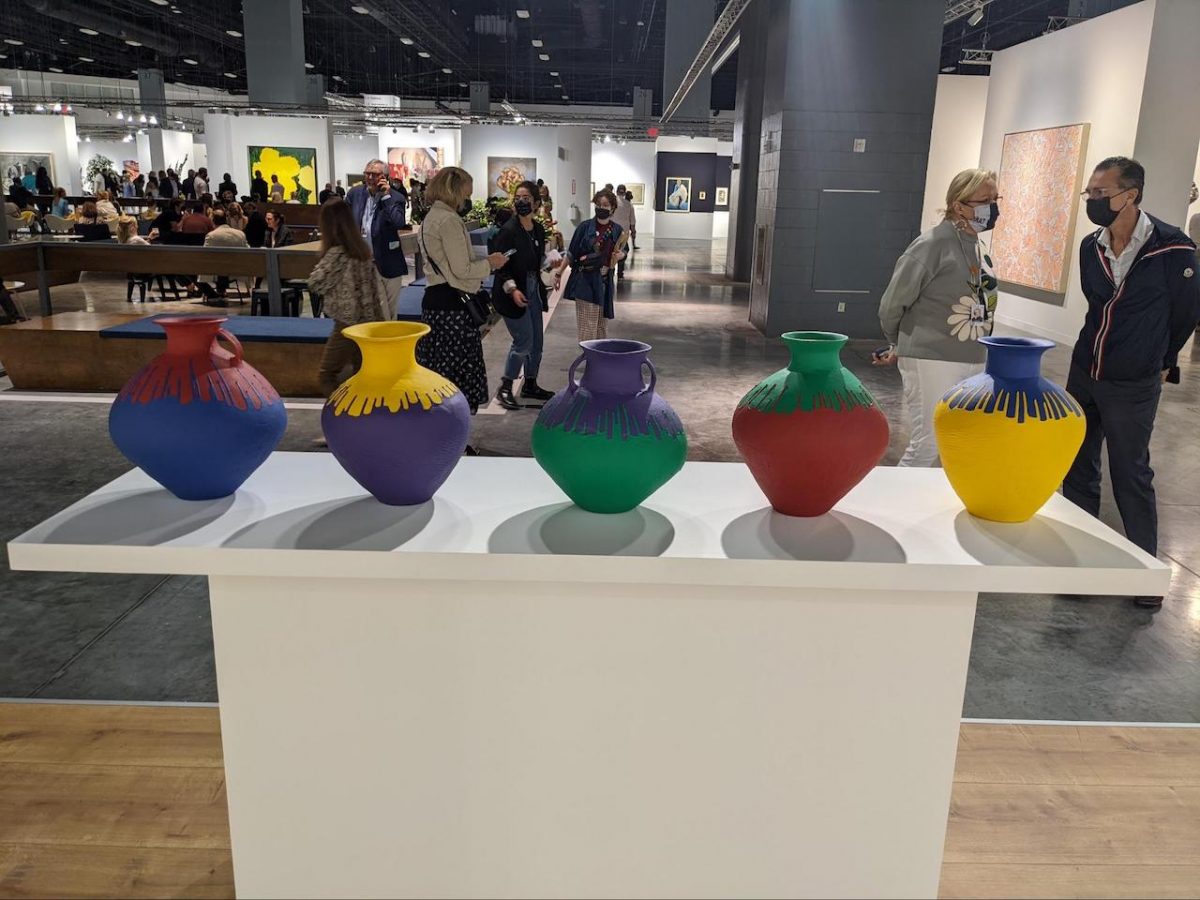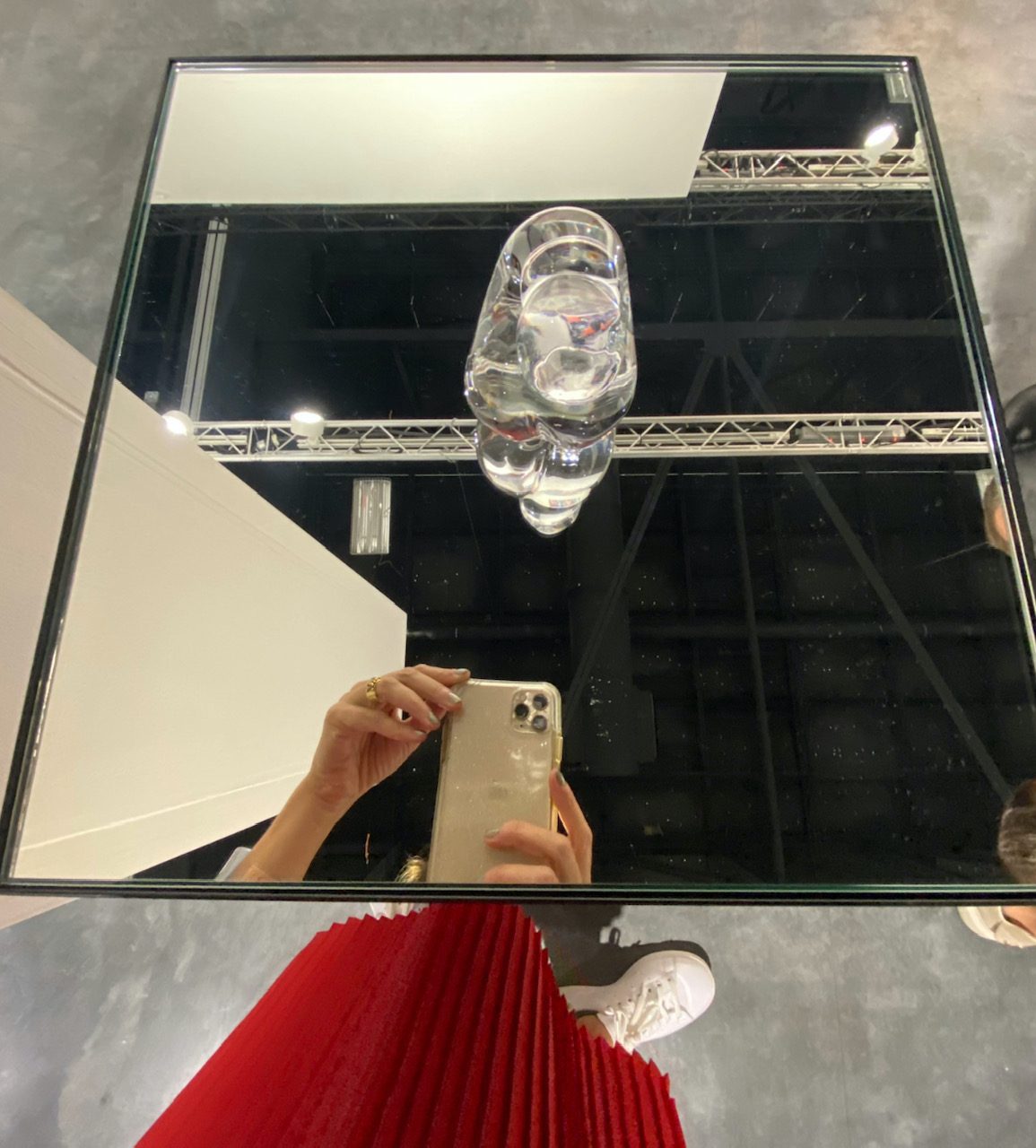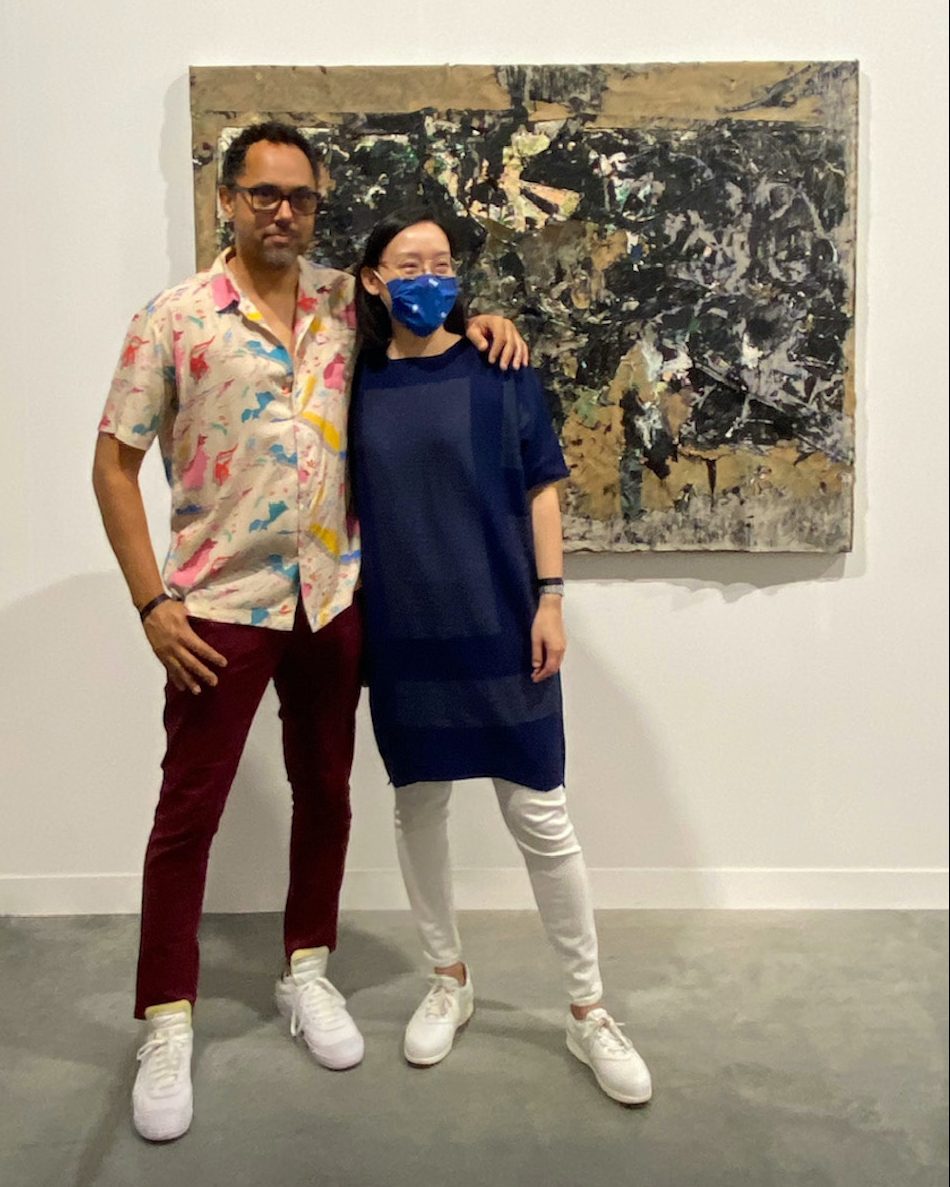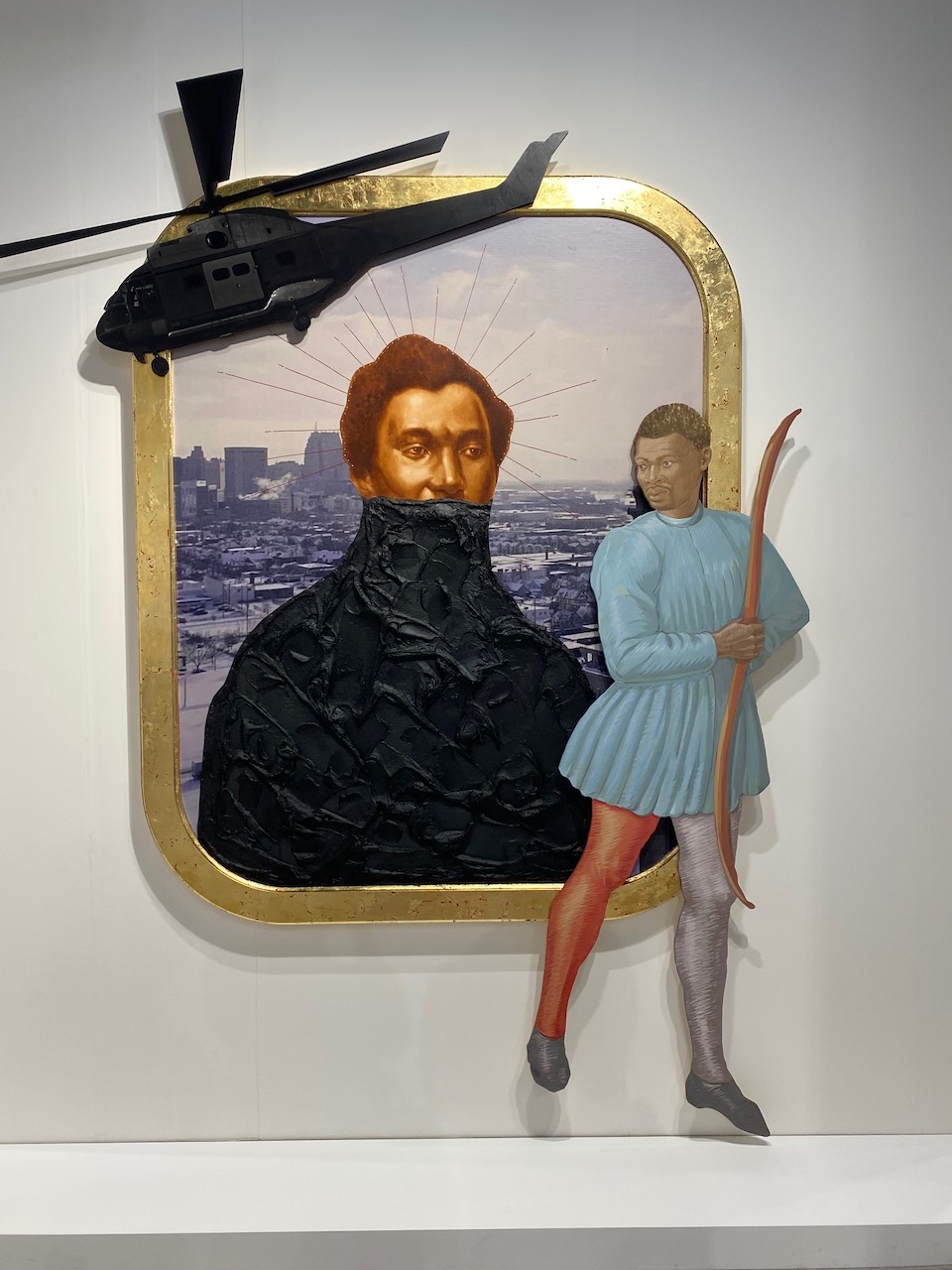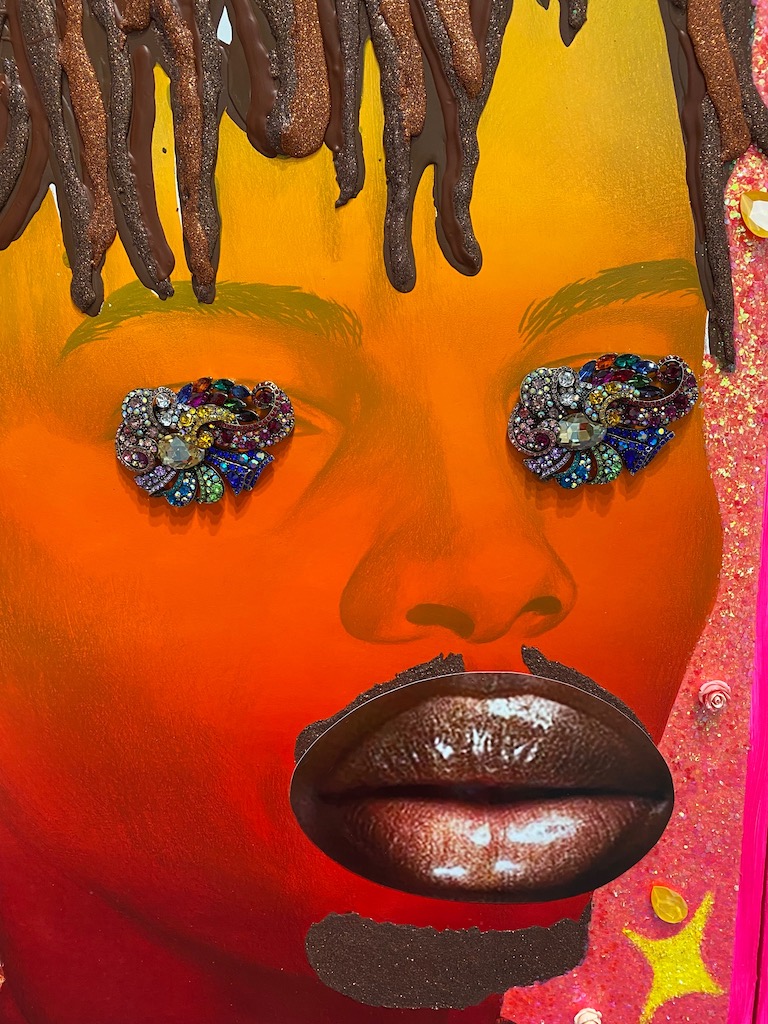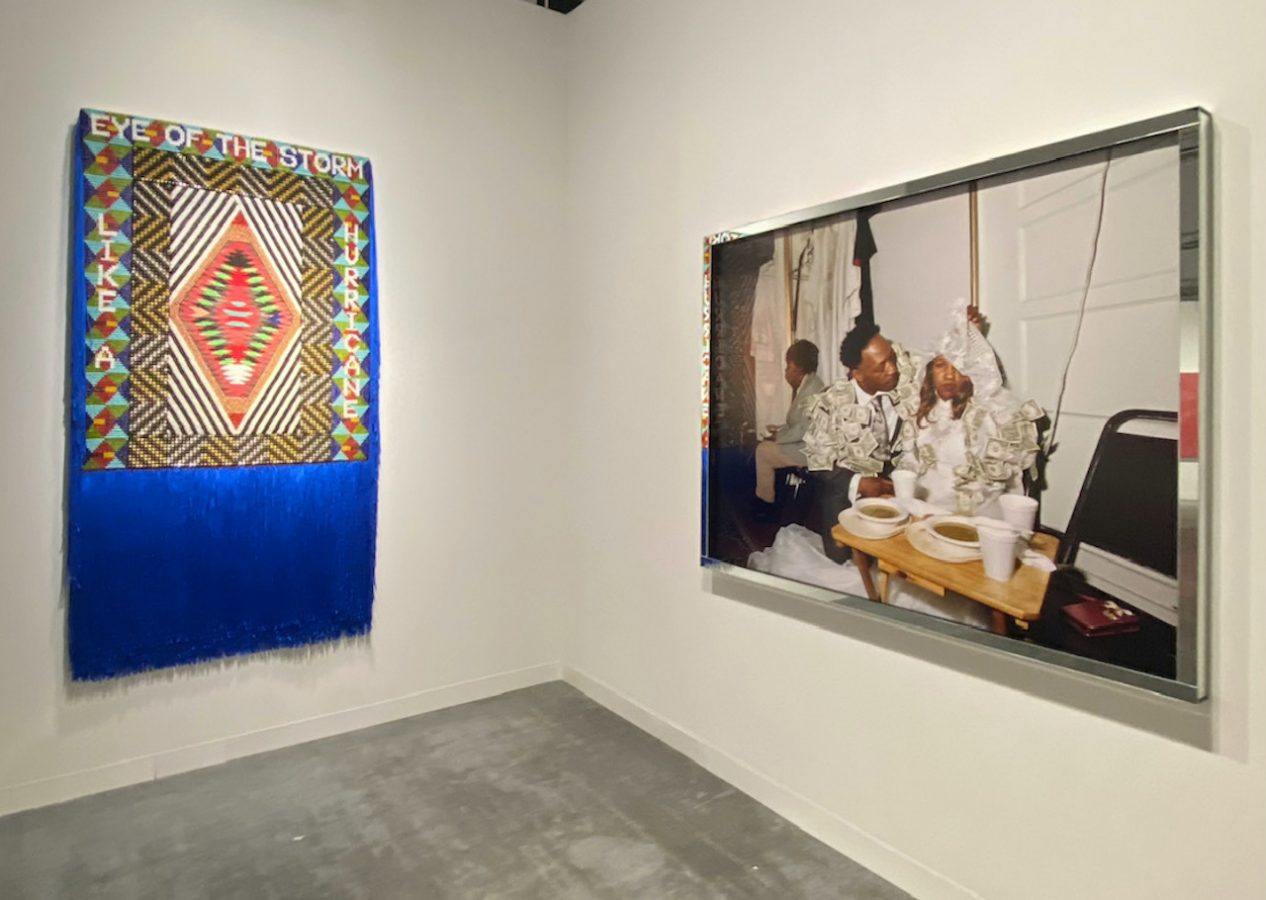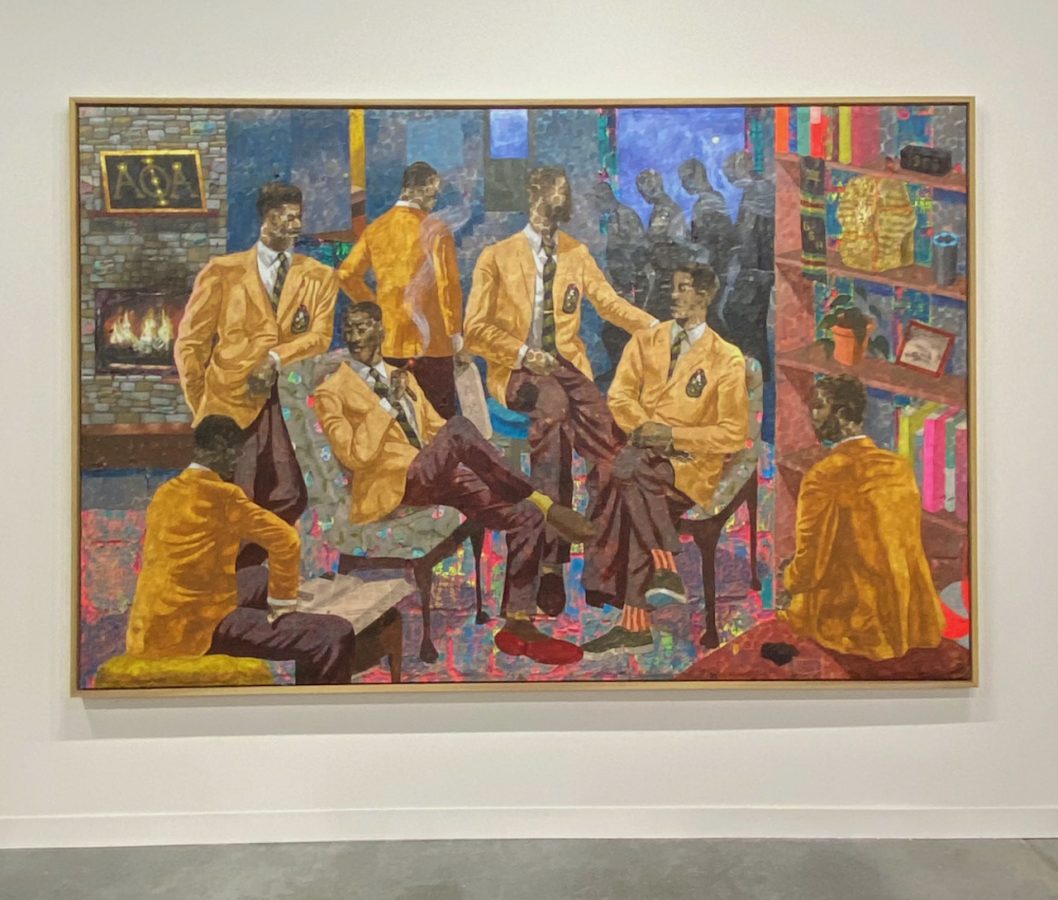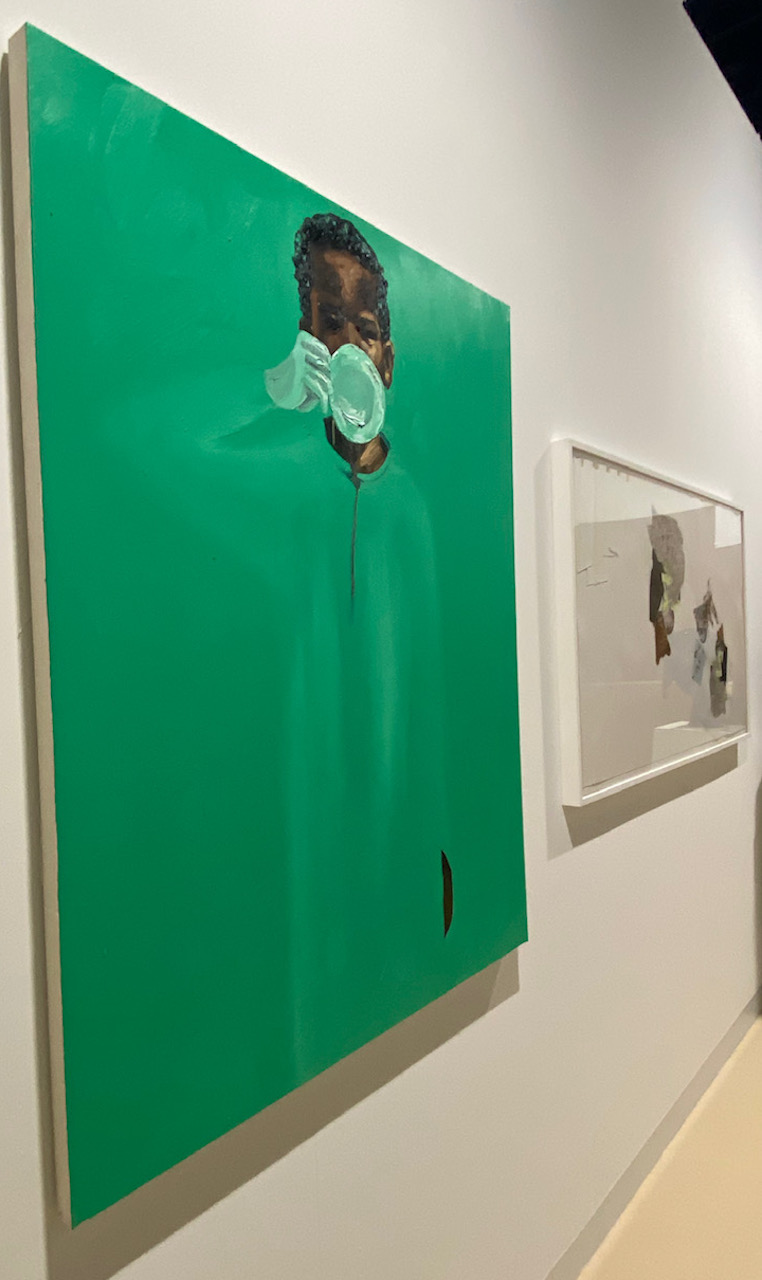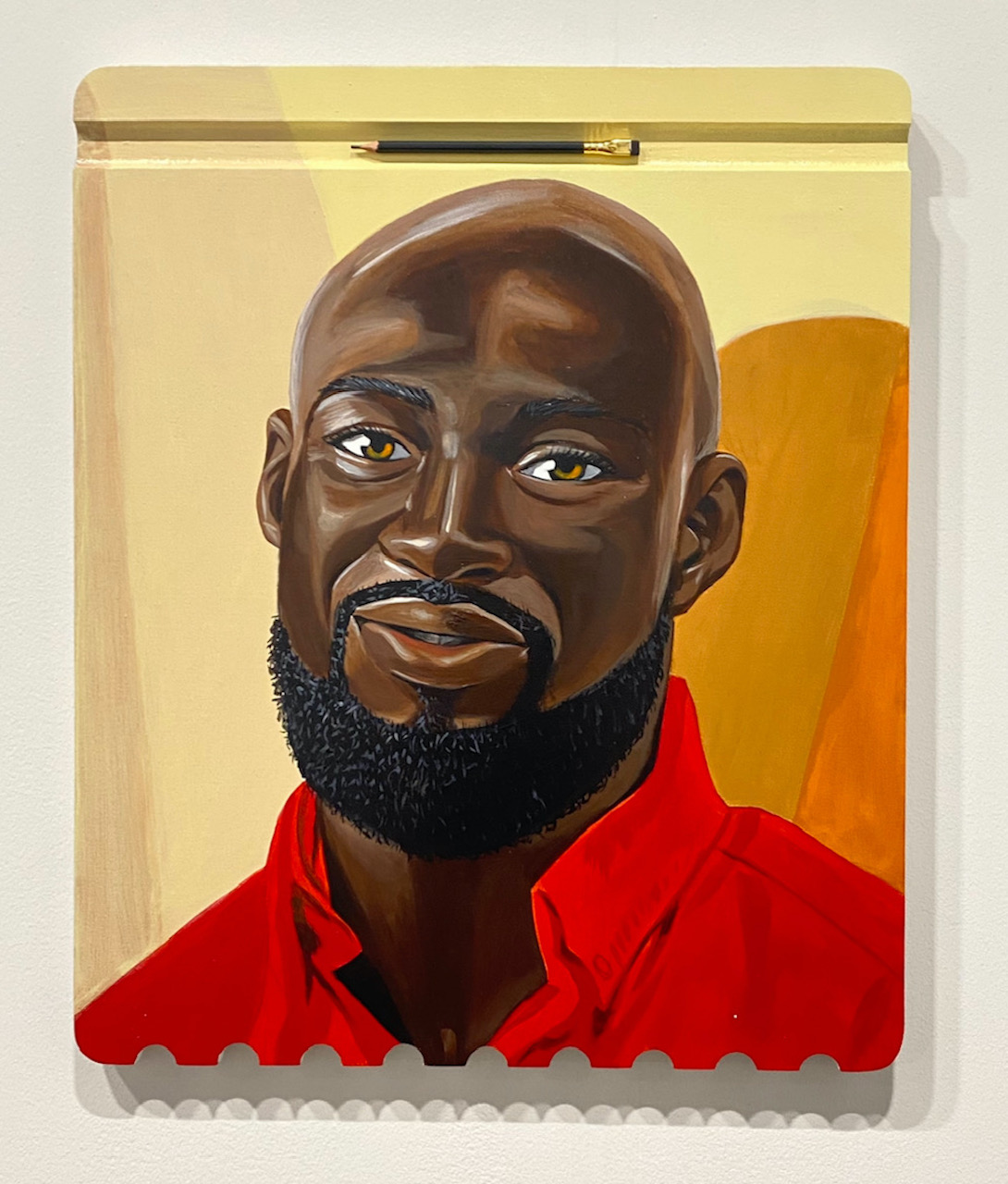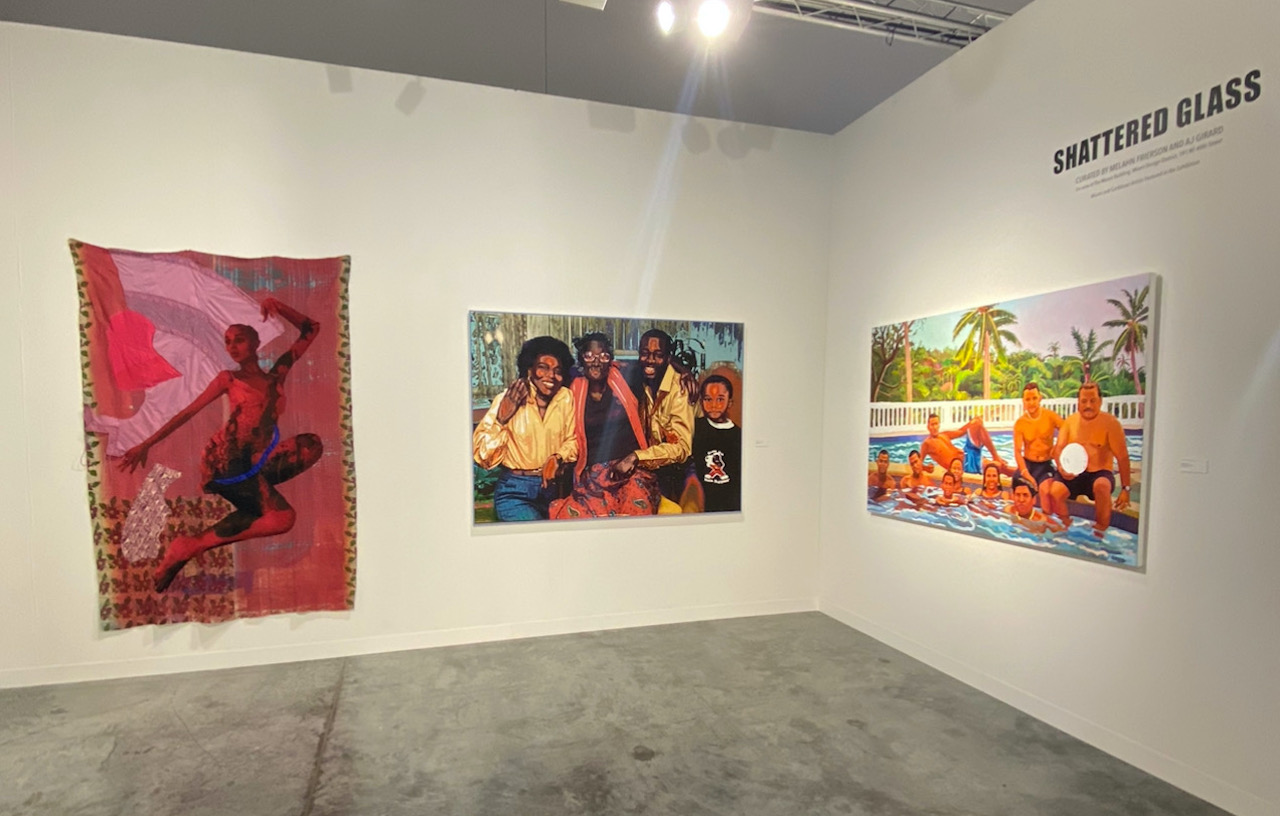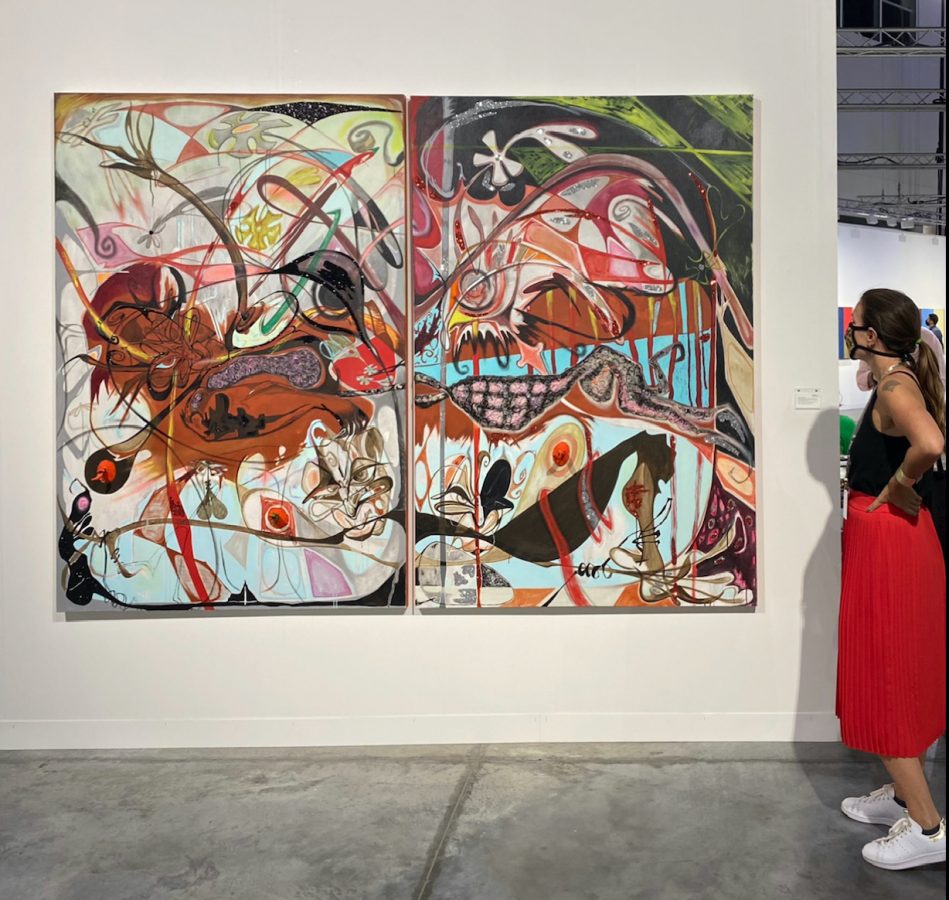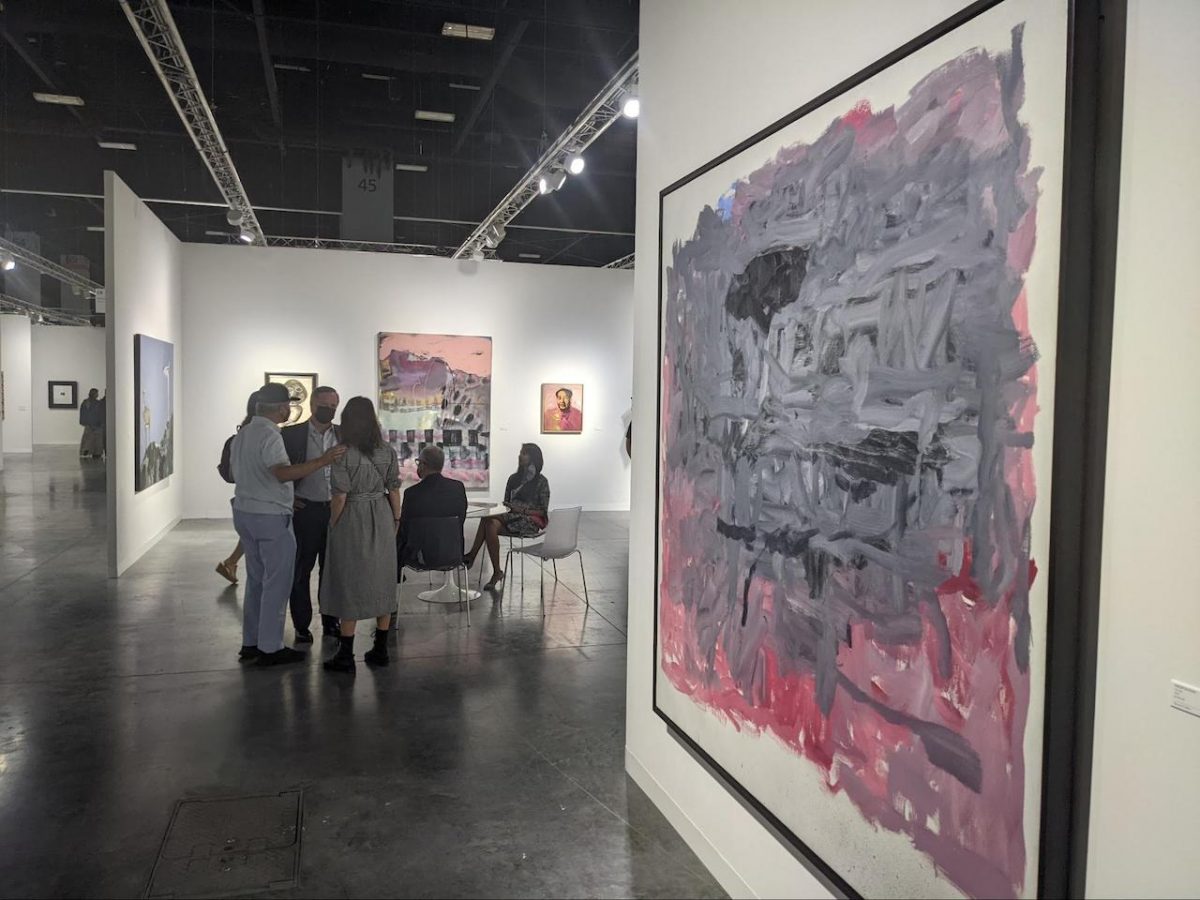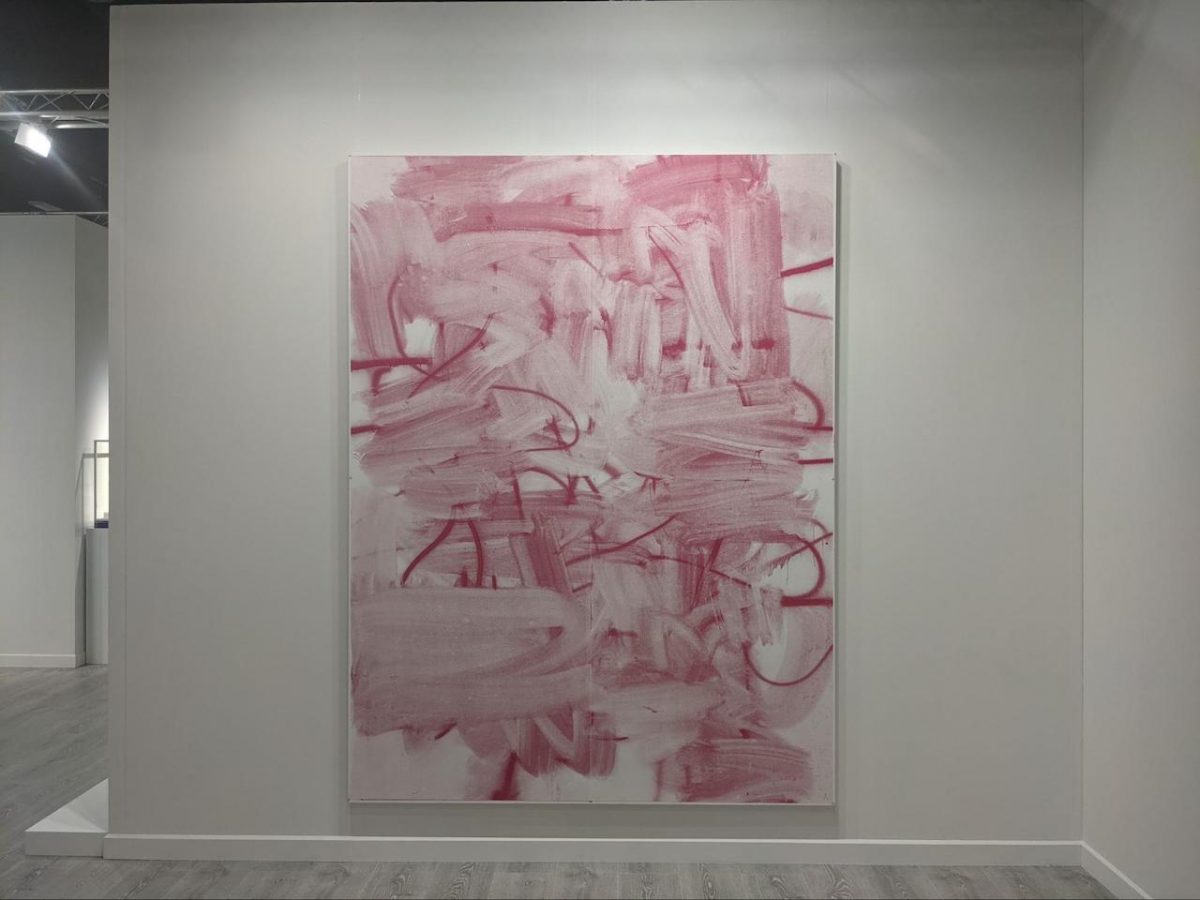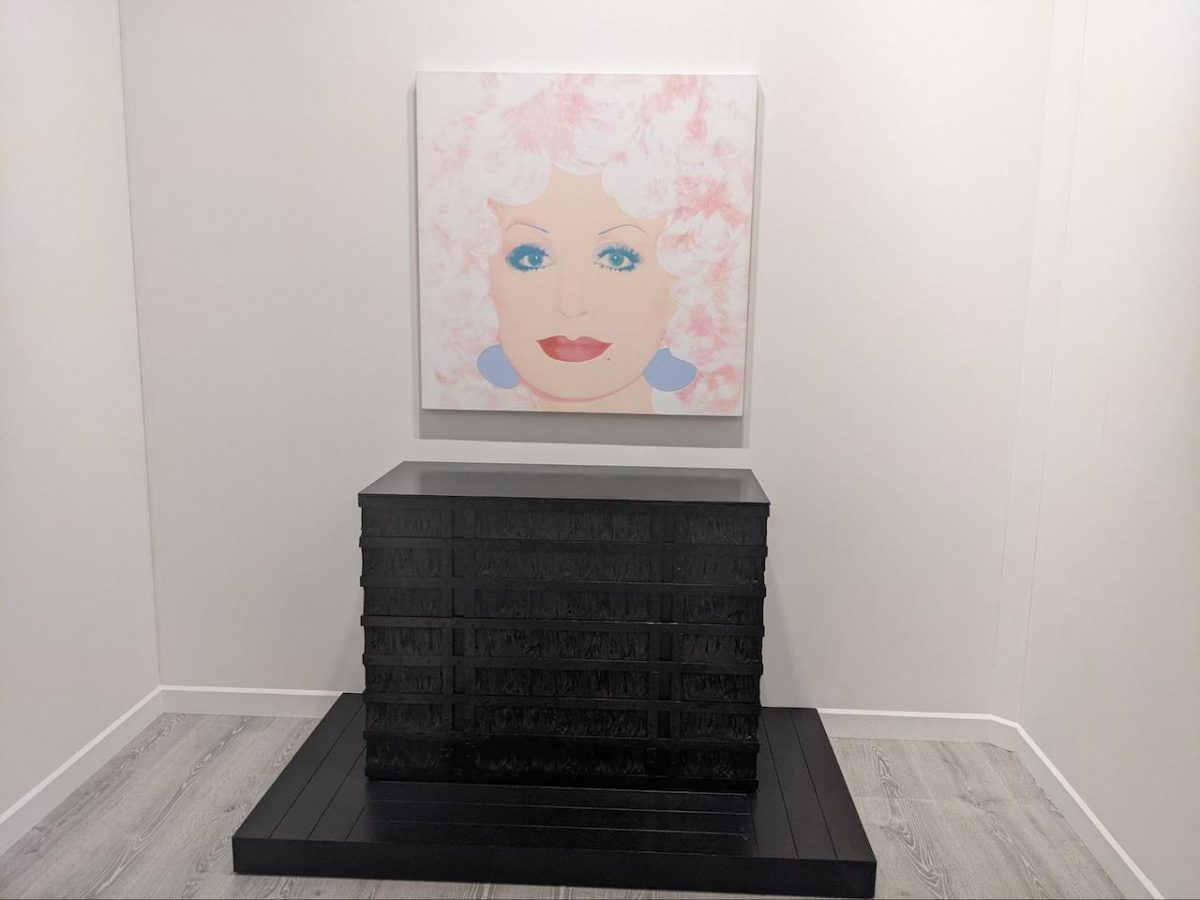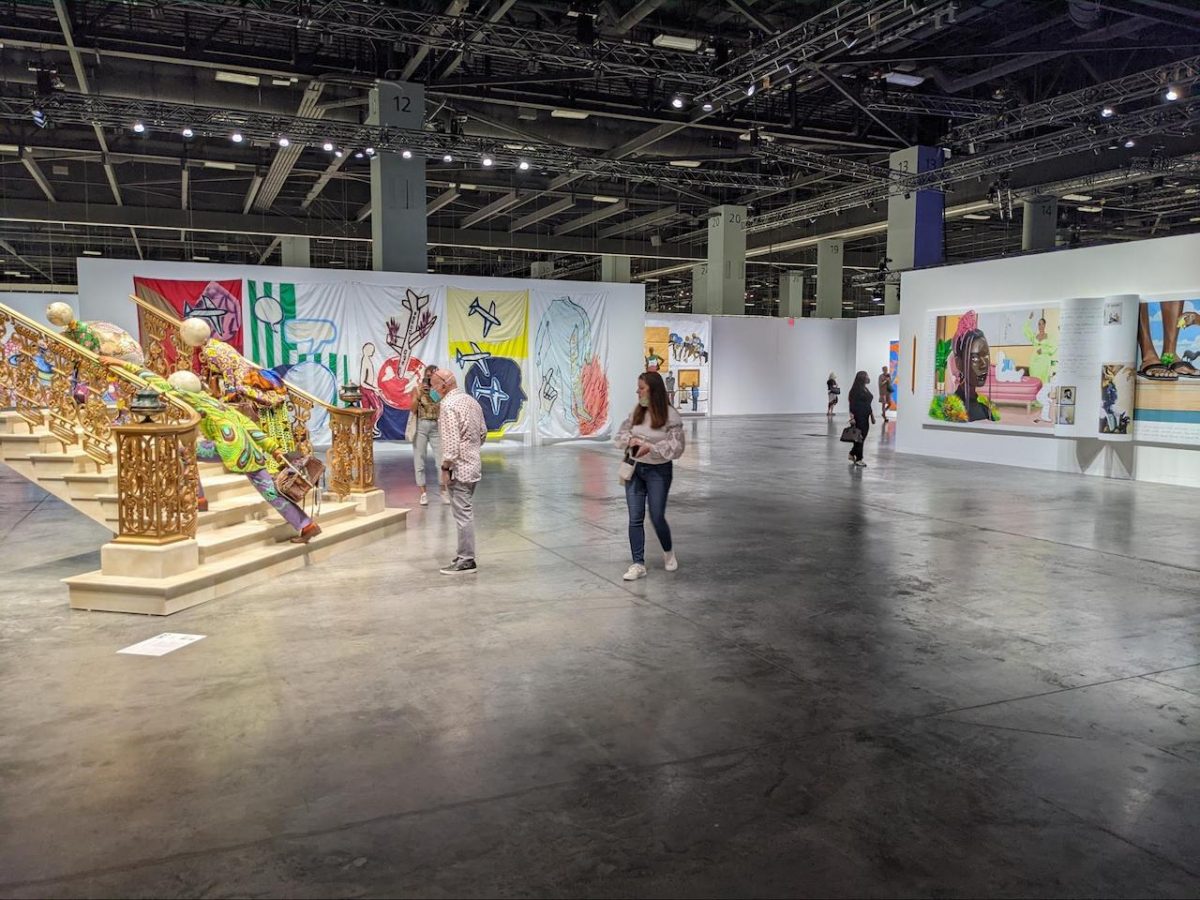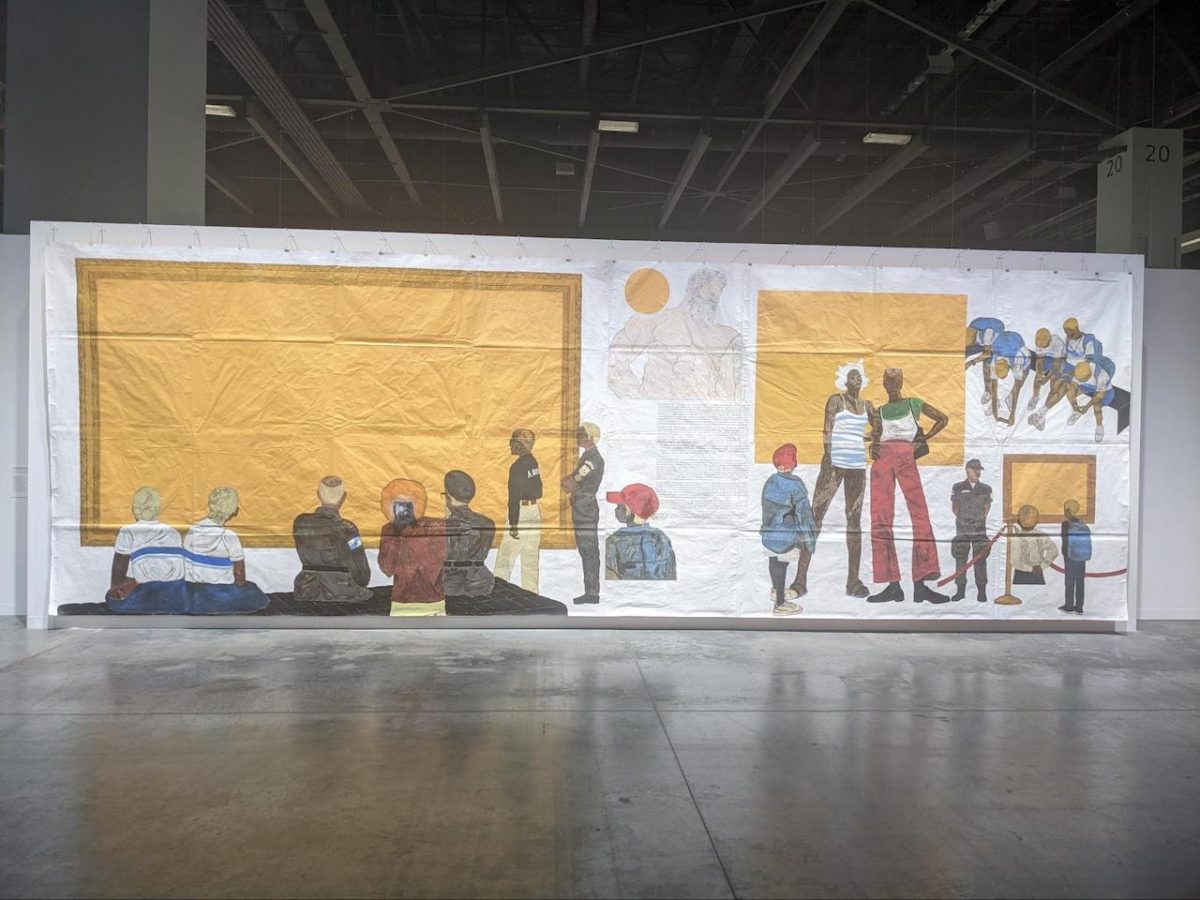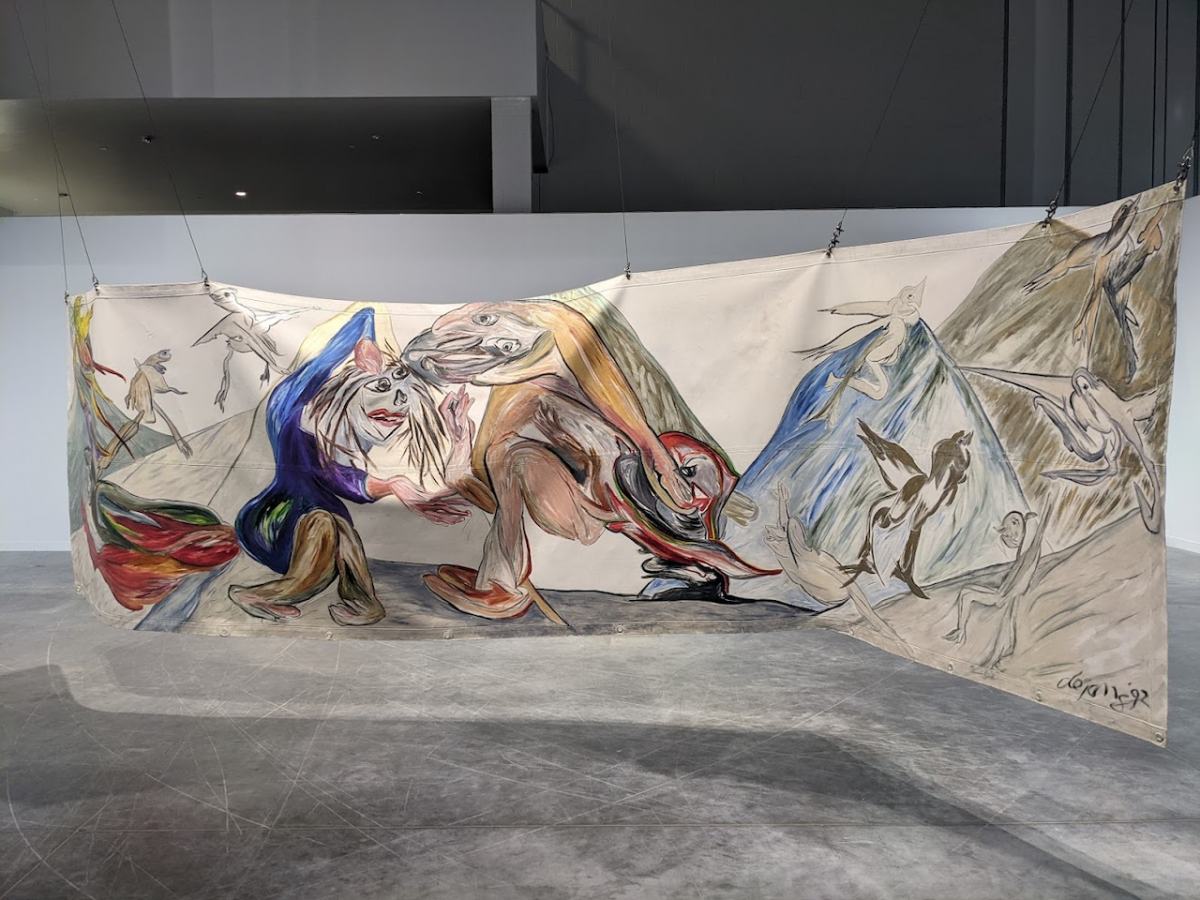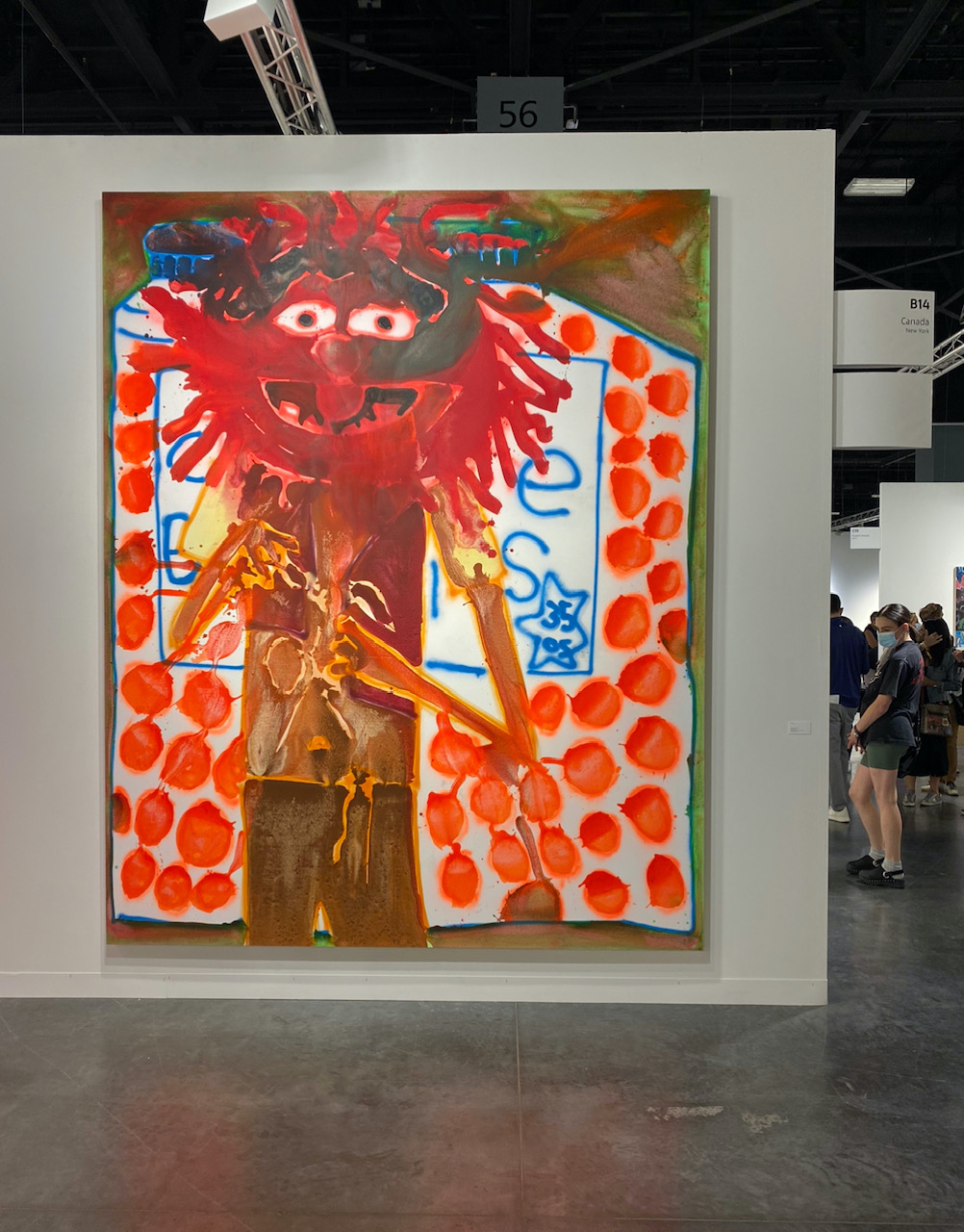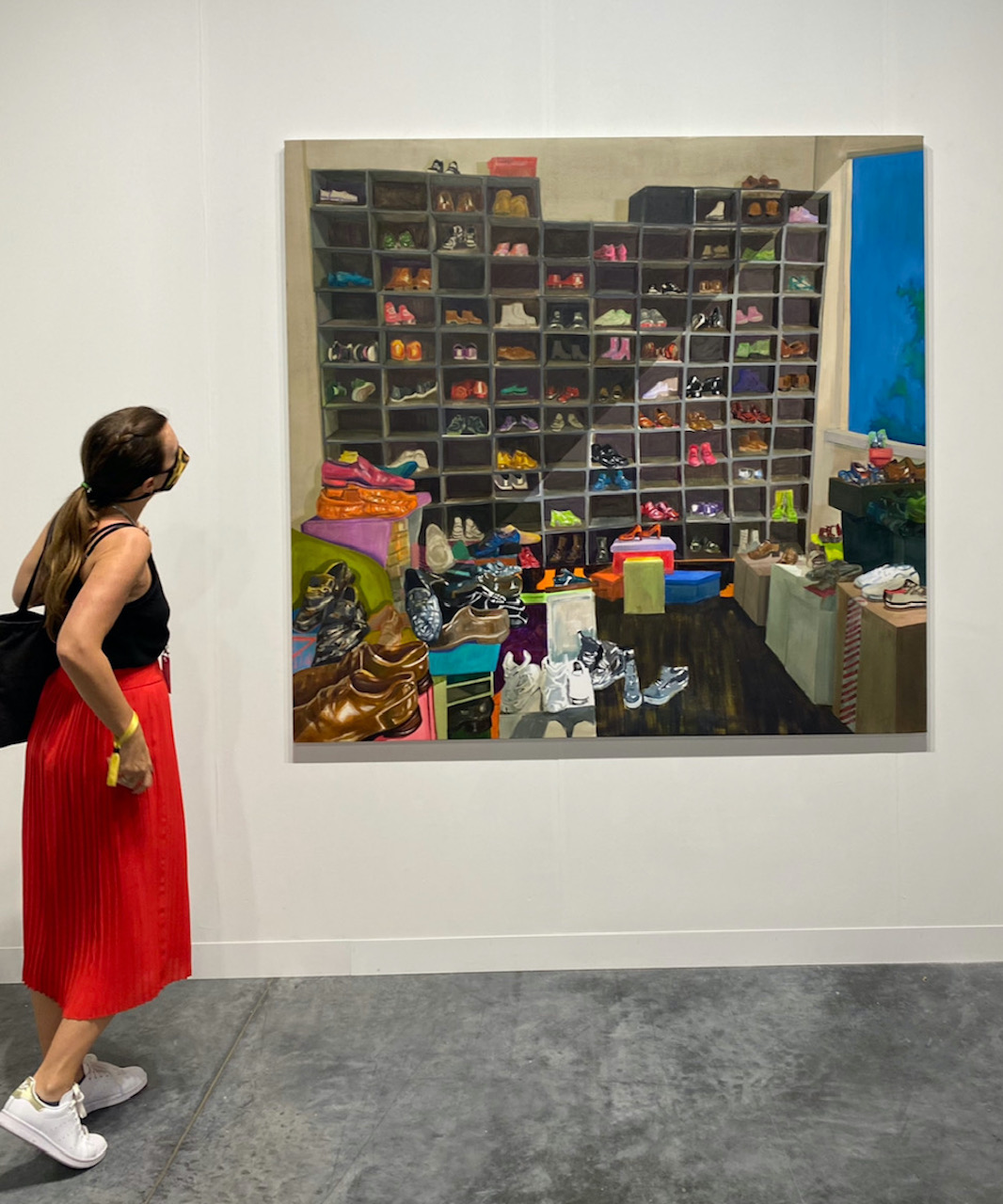Cara Ober: After taking a virtual year in 2020 for the pandemic, Art Basel was back in person at the Miami Convention Center December 1-4, just as overwhelming in scale and saturation as it ever was. The 2021 iteration of Miami’s biggest and most important fair featured noticeably more galleries owned by women and people of color, as well as a few more South and Central American galleries than ever before, which is great, in terms of the market correcting itself to include a more accurate selection of art and artists.
While it’s exciting to view works of art available by some of my favorite artists and imagine just how much better they will look in museums rather than a convention center booth, I prefer to discover new names whenever possible, and this year’s big fair provided a lot of exciting artists and gallery programs to follow.
First of all, almost everything was mixed media and maximal, as if artists have been cooped up for the past two years with a studio full of crap hoarded indefinitely and found it a now-or-never moment to use these materials to varied and experimental results. Although a few contemporary booths confided that museums tend to buy paintings instead of textiles because it’s more complicated to care for, there was a profusion of woven and fiber-based works, running the gamut from digitally printed cloth, some hand embellished with beadwork, embroidery, and collage, to handwoven, jacquard, and loom-based pieces, quilts, rugs, with installation combinations of all of them. I love any kind of textile for the way it offers a traditionally feminine sense of comfort and also rebellious flirtation with decorative arts, so I really enjoyed this aspect of the fair.
I noticed a lot of neon sculpture and signs, typical for art fairs where it helps to have an attention-grabbing medium. I also saw mirrors used in a variety of ways, from painting and printing on them like canvasses to crushing them up as a painting medium. There was a ton of figurative and portrait painting, specifically depicting Black and brown people, much of it employing mixed-media collage and textual elements. Also, a surprising number of glass phalluses and vaginas, so apparently genitalia-inspired art is having a moment? I can only assume that glass genetalia sculpture, and penis and vagina art in general, is on trend because of our national reckoning around abortion restrictions and the conservative desire to transform America into a patriarchal autocracy?
Michael Anthony Farley: Yes to all of the above! Cara, I don’t think you made it all the way through the gauntlet of all of the little pop-up satellite fairs, but I’d like to mention that any fans of genitalia-centric artwork should probably check out the unfortunately-named ArtGaysel next year. It is definitely one of the kitschiest hotel-takeover art fairs (think wall-to-wall dicks in everything from embroidery to polaroids) but had quite a few highlights in the, uh… niche genre of penis paintings. I mention this because it was one of a handful of more informmal events that reminded me that the “online viewing rooms” of 2020 could never replicate the experience of walking in to a hotel room and finding artwork hung from a sex sling.
Overall, I got the impression that the main fair was less saturated with casual tourists and more saturated with riskier media than in years past—a welcome development—but if I never have to hear the acronym “NFT” ever again in my life it will be too soon.
